

















As the end of the year approaches and cool air begins to stream in steadily from the north, minds begin turning to warming trips to Taiwan’s hot-spring destinations.

In this issue, we’re your travel guide to various soaking joys in the northeast region’s Yilan County and along the North Coast (both just an hour or so by car from central Taipei), and in Taipei itself in the Beitou hot-spring area, which is tucked up against the mountain massif on the city’s north side.
In our Yilan hot springs feature file the focus is on the county’s many different ways to find soaking pleasure, from outdoor pools and in-room tubs in 5-star hotels to rustic bathhouses surrounded by mountains to “fish foot spas,” and even to natural cold springs enjoyed in a park designed to look like an alfresco ancient Roman bath. And in an accompanying Local Stay article we roll out three of its best and most popular high-end campgrounds, two of which rent comfy camper trailers, which have proven a big “roughing it” hit in Taiwan in the last decade.
A key focus in our North Coast foray is the four different types of springs found in the adjacent Jinshan and Wanli districts: milky-looking sulfur springs; salty underwater springs that have been filtered through the bedrock; odorless carbonic acid springs; and opaque, golden-orange iron springs.
The main focus of our Beitou hot-spring district quick-tour is its rich historical and geological attractions. The Japanese began developing this area around the turn of the last century, during their 1895~1945 stint as Taiwan’s colonial overlords. We explore sites with such intriguing names as Marshal Zen Garden, Long Nice Hot Springs, and Xinbeitou Railway Station on the history side, and on the geology side Sulfur Valley and Thermal Valley, also called Hell Valley.
Know what Taiwan’s most important food crop is? That’s right – rice. In this issue’s Good Food article, you’ll be sitting down at a number of Taipei dining spots to savor some of the many, many ways rice is served at table. We also spend this edition’s Expert Talk in Taipei, where you’ll join the island’s DIY crafting trend at a silversmithing workshop.
The peoples of the world are at last out exploring each others’ countries again. We welcome you warmly to our very big little island!
DIRECTOR OF
International Division, Taiwan Tourism Bureau
Add: 9F, 290 Zhongxiao E. Rd., Sec. 4, Taipei City, 10694, TAIWAN Tel: 886-2-2349-1500 Fax: 886-2-2771-7036


E-mail: tbroc@tbroc.gov.tw Website: http://taiwan.net.tw
Vision Creative Marketing & Media Co.
1F, No. 5, Aly. 20, Ln. 265, Sec. 4, Xinyi Rd., Taipei City 10681, Taiwan Tel: 886-2-2325-2323 Fax: 886-2-2701-5531 editor@v-media.com.tw
ADMINISTRATIVE DEPT
This magazine is printed on FSC TM COC certified paper.
Any product with the FSC TM logo on it comes from a forest that has been responsibly maintained and harvested in a sustainable manner.
This magazine was printed with soy ink. Soy ink is said to be more environmentally friendly than petroleum-based ink and to make it easier to recycle paper.
Rick Charette, Ami Barnes, Owain Mckimm
Chen Cheng-kuo, Ray Chang
Ian Tsai , Hsieh Yun-jhen
Lily Wan, Hui-chun Tsai, Xiou Mieng Jiang

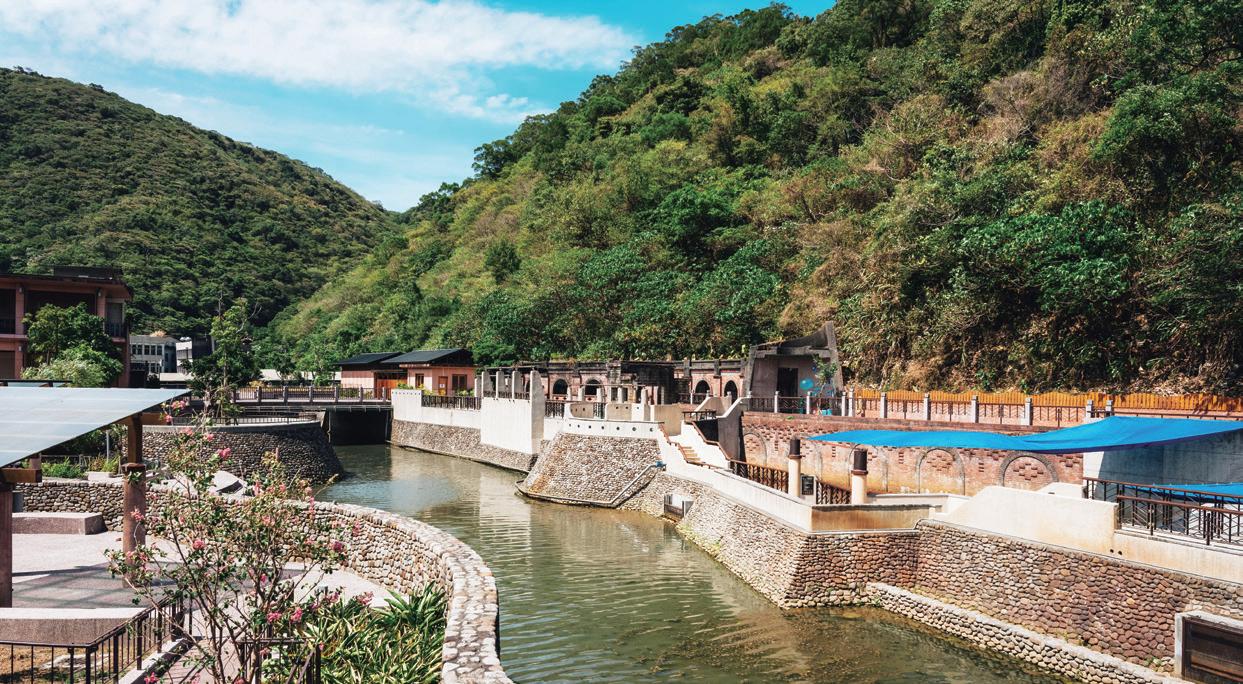

NEW TAIPEI CITY1
NOV. 11 ~ JAN.
TAIPEI CITY
Where can you experience a happy big dose of Christmas spirit in Taipei come December? While in Western countries Christmas is for many the most important festival of the year, in Taiwan, where followers of the Christian faith make up only about 4.5% of the population, it is naturally of lesser importance. There is, however, one bigtime Christmas-themed event, Christmasland in New Taipei City’s Banqiao District. The center of attention each year is a giant artificial Christmas tree, illuminated with a sophisticated light and imagery show. Each year, the façade of the New Taipei City government building serves as a gigantic canvas for an entertaining animation show. newtaipei.travel (New Taipei City Travel)
DEC. 16 ~ JAN. 1CHIAYI CITY2
After more than three decades of effective management and great performances, the Chiayi City International Band Festival has become the most time-honored city carnival in Taiwan. It not only highlights and builds upon Chiayi’s rich cultural heritage, but it also provides a platform upon which the city can demonstrate its unique charm to the world. The arts adorn the seasons in Chiayi City, filling the municipality with enchantment, joy and beautiful music. In addition to the festival, local schools have been active in developing many band music classes and clubs. They have increasingly engaged in exchanges with leading foreign bands and symphonies, helping to further promote musical culture in Chiayi. This has helped transform the city into a premier destination for music enthusiasts, as well as a marvelous place to enjoy a wonderful cultural atmosphere. www.chiayi.gov.tw (Chiayi City Government)
The small town of Yanshui (old name: Yuejin), in Tainan City, is best known for the annual Yanshui Beehive Fireworks Festival. The Yuejin Lantern Festival, lesser known but equally attractive, is a beautiful and much more peaceful affair. Visitors can go on romantic walks through a park area and marvel at colorful and beautifully shaped lanterns floating peacefully on the waters of the town’s river. Each year the festival provides artists with a stage for showcasing highly creative and tastefylly illuminated installation art. In 2018, the event was recognized for its design, winning a prestigious Red Dot Design Award. yuejinlanternfestival.com (official website)
Around the world, the New Year’s Eve end of the year is celebrated with a countdown and fireworks, and Taiwan is no exception. The most spectacular of these pyrotechnic shows on the island is without a doubt the one that makes the sky-reaching Taipei 101 tower erupt in a sea of sparkling and exploding lights. The fireworks display is accompanied by a high-tech LED display on one of the giant faces of the city’s towering landmark. Throughout the evening leadup to the spectacular, the crowds are entertained by some of the best-known and most popular local music artists. www.travel.taipei (Taipei City Travel)
There are larger and more beautiful butterlies than the ones of the euploea genus, also commonly known as crows because of their dark colors, but when they gather in large numbers to spent the winter in southern Taiwan, they are a sight to behold. The largest concentrations can be found in the Maolin Purple Butterfly Valley inside Maolin National Scenic Area. Butterfly lovers come in large numbers as well, eager to find the Striped Blue Crow, Double-Branded Black Crow, Dwarf Crow, Euploea Eunice, and even the Chestnut Tiger. Visit the Maolin Visitor Center to find helpful information about the butterflies before going on the trails and see them in the wild. www.maolin-nsa.gov.tw (Maolin NSA)
Just a few days before Christmas, which in Taipei means mild temperatures that are perfect for road running, the Taipei Marathon takes place in the heart of the capital. This is for many local athletes the highlight of the annual race calendar, and entry slots can be hard to come by, with the number of participants in the full marathon limited to 9,000 runners; 19,000 are allowed to run the halfmarathon. The races start and end at Taipei City Hall, with the route following along some of the city’s main thoroughfares.
(Taipei City Travel)
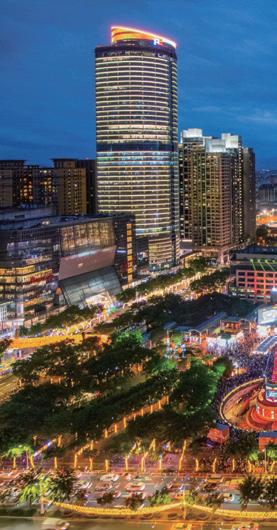


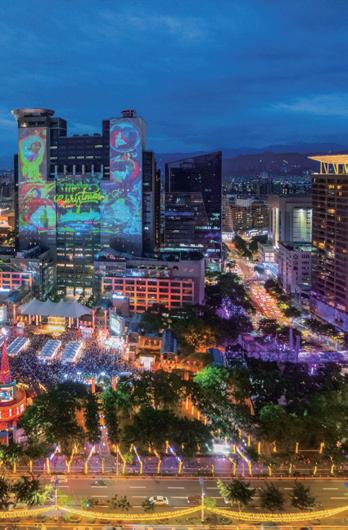
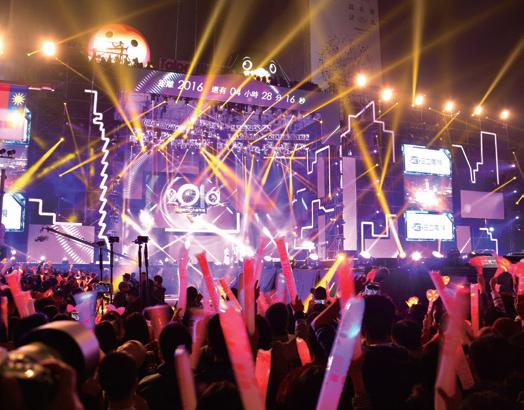



It’s soon to be winter season again, but no worries, traveling in Taiwan can be enjoyed throughout the seasons. With the gradual lifting of Covid-related travel restrictions, visiting our charming island is becoming increasingly appealing again. Curious about new tourist attractions on the island? Read on!
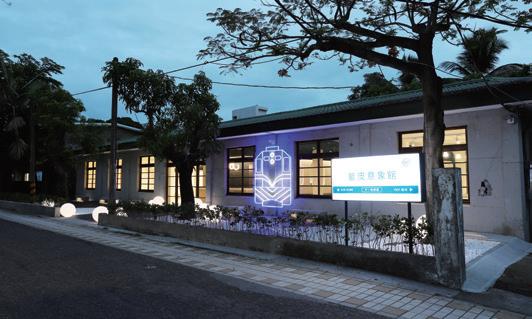
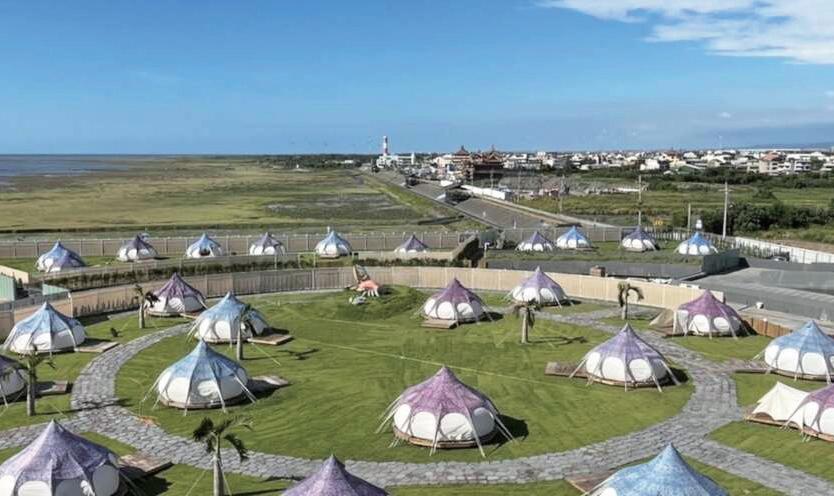
Taichung’s Gaomei Wetland, best known for beautiful sunsets, is one of the most popular tourist attractions in central Taiwan. Off the south end of the wetland is a spacious modern visitor center with a rooftop observation deck presenting visitors with panoramic views of the area. On the grounds of the center is a lawn area that has recently been transformed into a new campsite, with 27 four-person tents resembling small yurts. Another new addition to the center is a restaurant on the second floor with seating for 80 diners. www.gaomei.com.tw (Chinese) taichung.travel/en (Taichung Tourism and Travel Bureau)
Railway enthusiasts will certainly be interested in the Breezy Blue train experience, a nostalgia railway ride on the South-Link Line, connecting Fangliao Railway Station in Pingtung County with Taitung Railway Station in Taitung County. The train has a diesel-engine locomotive and decommissioned non-air-conditioned cars meticulously restored to their original state, now allowing travelers to experience what rail travel was like decades ago. To learn more about Breezy Blue, visit the Breezy Blue Hall by the Fangliao station. Originally a dormitory building for railway workers, the hall is a cultural space with an exhibition room, bar area, and service counter. www.facebook.com/breezybluetrain
Eagerly awaited each year by gourmets and gourmands alike, the Taiwan edition of the Michelin Guide this year gives you a great overview of the best culinary options in the cities of Taipei, Taichung, Tainan, and Kaohsiung. A total of 38 restaurants received stars this year, including one three-star recipient, Cantonese restaurant Le Palais (Taipei), seven two-star selections (Taipei 6 and Taichung 1), and 30 one-star picks (Taipei 24, Taichung 4, Kaohsiung 2). guide.michelin.com/tw/en

Grand opening October 2022; 228 guestrooms; located close to Taichung Railway Station www.lemeridien-taichung.com.tw


Soft opening August 2022; 42 guestrooms; located in Tainan’s Anping District; www.mori-hotel.com
There are many trails in Taiwan that give hikers the chance to enjoy a peaceful time embraced by nature, but there is only one (so far) that has been recognized by the US-based Quiet Parks International organization as a “Quiet Trail.” The almost 4km-long Cuifeng Lake Circular Trail, inside the Taipingshan Forest Recreation Area in Yilan County, is located at around 1,900 meters above sea level. Its exceptional quietness is due to the trail’s remoteness, about 14km from Taipingshan village along a narrow winding road, as well as the abundance of moss in the lush and moist forest along the trail. tps.forest.gov.tw (Taipingshan Forest Recreation Area) www.quietparks.org (Quiet Parks International)


In a recent survey by the website timeout.com, Taipei City’s Yongkang Street was named one of the “33 coolest streets in the world.” The street (close to MRT Dongmen Station) and its surrounding lanes and alleys are well-known for diversified restaurants (Din Tai Fung dumplings), ice parlors (mango ice), and boutiques.
Some of the most scenic natural areas of Taiwan can be inconvenient to reach by public transport, if at all. The Guanwu Forest Recreation Area used to be one of them, but thanks to the Taiwan Tourist Shuttle service, visiting without your own means of transportation has become much easier. The Guanwu Route of the service’s network, launched at the end of August, connects the Hsinchu highspeed rail station and Zhudong Railway Station with the Guanwu area, the bus making stops along the way, including at the hot-spring village of Qingquan and Sheipa Leisure Farm. One-way tickets are priced NT$300, and there are two services a day. www.taiwantrip.com.tw (Taiwan Tourist Shuttle)
Until February 19, 2023
Kaohsiung Museum of Fine Arts ( Kaohsiung City )
If you find that the name Minä Perhonen sounds a bit Finnish, you are not mistaken. According to Japanese designer Akira Minagawa, who founded the brand in 1995, the name means “I butterfly” in Finnish – the “I” referring to himself. The name both expresses his love for the Scandinavian country and the beautiful patterns that can be seen on the wings of butterflies, patterns that have been among the inspirations for the patterns on fabrics created by Minagawa. This exhibition features many of the brand’s products, including textiles, clothes, home/workplace interior goods, and tableware, but also artworks and materials, such as videos, printed materials, and Minagawa’s original design drawings and illustrations. www.kmfa.gov.tw mina-tsuzuku.jp/en
Until February 28, 2023
Chimei Museum ( Tainan City )
Bad luck for visitors to London who wish to visit the National Portrait Gallery means good luck for visitors to Tainan’s Chimei Museum. Because of ongoing renovation work at the gallery, treasures from its collection have been on tour recently, and 70 portraits are currently on display at the Tainan museum. Among the exhibits are portraits of some of the biggest names in British and world history, from Shakespeare and Darwin to the Beatles and David Beckham. www.chimeimuseum.org


MYSTERY OF THE JINGTAI CLOISONNÉ UNVEILED

Until April 14, 2024 Southern Branch of the National Palace Museum ( Chiayi County )
Cloisonné is an ancient technique for decorating metalwork objects with colored material held in place or separated by metal strips or wire, normally of gold. The technique, which originated in Byzantium and was introduced to China via Persia in the Yuan Dynasty (1271~1368), became popular during the reign of Ming emperor Jingtai (reigned 1450~1457), and artworks from that era are therefore known as Jingtai cloisonné. This exhibition has two parts, the first presenting fine examples of cloisonné from the Jingtai period, the second focusing on works created during the reign of Qing emperor Qianlong (reigned 1735~1796). south.npm.gov.tw
Tattoos have become very common in modern times as a widely accepted form of lasting personal statements and visual artistic expressions. While no body part seems to be off limits to tattoo artists and their regular customers, many tattoo lovers will, however, stop short of using their faces as canvas.
Facial tattoos, called wenmian in Mandarin Chinese, used to be widespread among Austronesian peoples, including the Maori of New Zealand, and tribes in Southeast Asia, including the Dai people of Thailand. In Taiwan, the Atayal, Truku, Sediq, and Saisiyat (with the help of the Atayal) practiced facial tattooing in the past (men with simple tattoos on forehead and chin, women with tattoos on forehead and across the cheeks/ around the mouth). The custom was banned by Taiwan’s Japanese colonial rulers in 1913, and people could only continue with the practice in remote mountain areas, risking being arrested and punished.
In 2016, the Ministry of Culture honored six indigenous elders with facial tattoos as the last preservers of this art form from the old days. The last of these was an Atayal woman, Lawa Piheg, who passed away at age 97 in 2019, and a Sediq woman, Ipay Wilang, who passed away at age 100

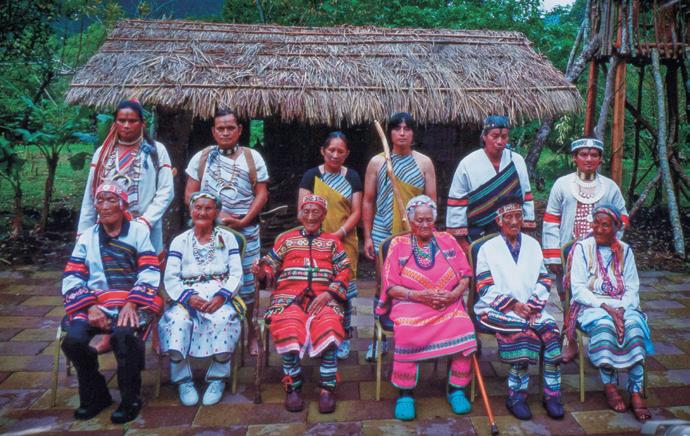
this June. With no one from the elder generation left as living preservers of wenmian, it’s now up to younger folks to continue the tradition.
In 2011, a "Passing on Facial Tattooing" event celebrating this indigenous tradition was held at Taroko Village Hotel, located inside the Taroko Gorge. Hotel manager Zheng Ming-gang (aka “Village Chief”), who has been running the hotel since 2003 and has been very active in supporting the local indigenous communities, invited some of the above-mentioned elder tribe members to honor them and encourage the younger generations to continue the tradition.
On September 25 th this year the hotel organized a follow-up event. Invited this time were younger tribe members who have had their faces tattooed in recent years. Hotel staff (all Truku) first put up an entertaining acting performance telling the story of traditional facial tattooing, explaining that in order to receive a tattoo young men had to successfully learn hunting and young women how to weave. Atayal, Sediq, and Truku from different parts of Taiwan then shared their touching stories of how they decided to get tattooed and how friends, families, and strangers reacted to their new permanently changed facial
participants, concluded with a grand traditional-style indigenous-fare feast in the hotel’s restaurant.
Many misconceptions about facial tattoos remain, both outside and within indigenous communities. Facial tattoos, for example, are not a sign of a headhunter, like some might still believe, and not everyone can get such a tattoo either; a traditional facial tattoo requires certain qualifications and the permission of tribal elders – and the spirits. This event showed that, for now, the practice of facial tattooing remains alive. Being a strong statement of pride in and identification with indigenous roots, and a symbol of connection with the ancestors and the spirit of one’s tribe, the practice is playing a key element in efforts to preserve traditional indigenous culture in Taiwan.
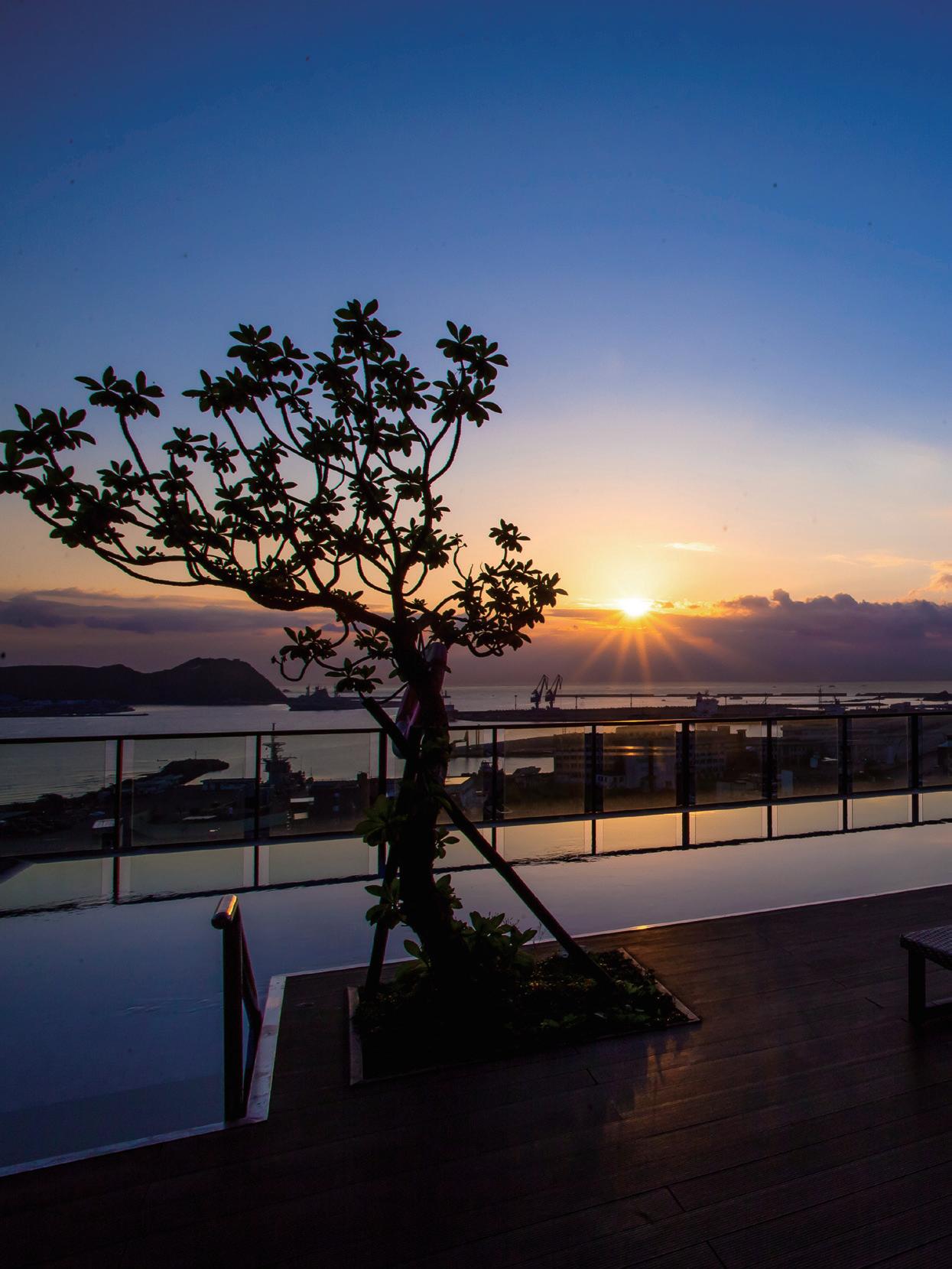
Beforediving into this article, take a second to take an astronaut-angle look at Taiwan using Google’s satellite view. The deep lines shown in the ocean off the island’s east flank, matching up so symmetrically with its thick lines of sky-reaching mountains, reveal the hyperactive tectonic activity going on. A key beneficial result – hot springs all over the place, from high up in the mountains to right down by the coast.
Taiwan’s hot-spring density is even higher than that of Japan, so synonymous with refined hot-spring culture. It was the Japanese who brought love of soaking to Taiwan when it was a colony of Japan 1895~1945.
Yilan County’s heart is the high-yielding Lanyang Plain, framed by mountains north, south, and west and facing the Pacific. The county lays claim to its own fairshare bounty of hot springs (cold springs too!), experienced in every form from 5-star hotel luxury trappings to free public outdoor foot baths.
 Sunrise seen from Lakeshore Hotel in Su'ao
HOT SPRINGS Yilan
Sunrise seen from Lakeshore Hotel in Su'ao
HOT SPRINGS Yilan
The town of Jiaoxi is on the northwest side of the Lanyang Plain triangle, tucked up neatly against the base of the mountains. There is a forest of hot-spring hotels here – 30 years ago these were predominantly modest mom-and-pop operations, but since then the town has become a fountain of taller structures, with chic new works of architecture constantly springing up.
Vivir Jiaoxi stands among the new crop of modestheight boutique hotels that seek to blend in more seamlessly with the town’s natural environs. Opened just under two years ago, it’s situated in the back of the town just two blocks from the mountain base, in a quiet area away from Jiaoxi’s tourist-busy commercial streets closer to the railway station. There’s a large park area with dense forest cover right next door.
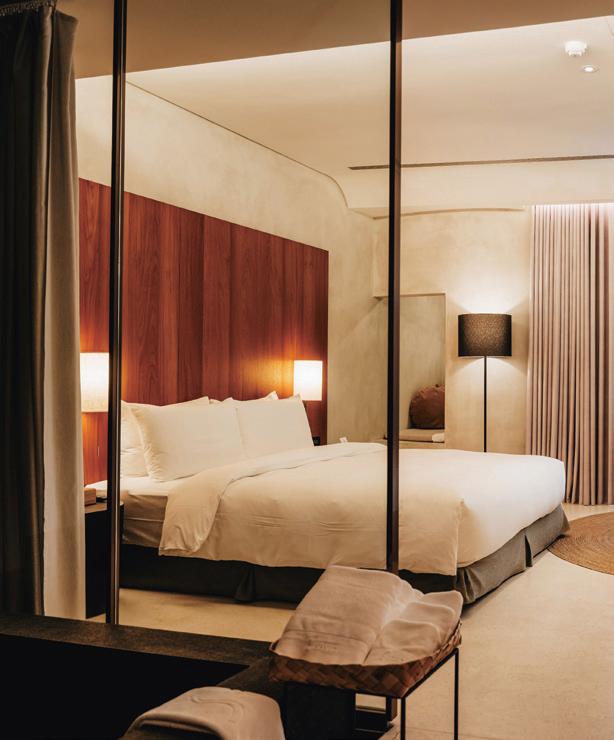


The hotel is intended as a Zen work of art, and the interior design, décor, and services present the guest with a Zen-like oasis of peace where you “discover the essence of serenity and tranquility.” A thick line of bamboo stands outside the hotel on its street-facing sides, and the entire façade of the seven-story building save the rooftop level is covered in bamboo stalks cut in half, creating a mountain bamboo forest-like initial view.

Entry is not via the ground level, but via an alfresco ramp to the B1 level; the ramp area has been given a grotto-like ambience, with the concrete wall close to the street shaped to look like a bamboo forest, water gurgling down it to create a waterfall effect with pool at bottom. You pass an open-façade art gallery (showcasing Yilan talent) to enter the subterranean check-in area.
On the ground level is the restaurant Habitat, where you’ll be enjoying your complimentary breakfast. Local ingredients are center stage. It has been designed to resemble a secluded cave, one sun-inviting end full glass, and its curving ceiling is contoured mimicking Yilan’s famed Turtle Island, indeed resembling a giant turtle.
The 31 modern-design rooms all feature Yilan naturecelebration décor themes – River, Forest, Hills, etc. – and have a Japanese-style bathroom with commodious stone hot-spring tub, many of which come with exterior view.

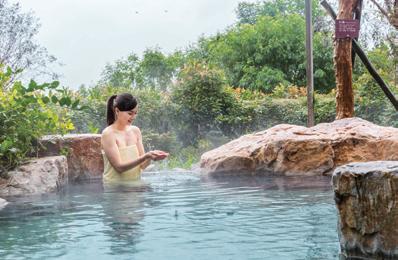
The single Sunrise room, on the roof level, also has a small outdoor pool.
Readying itself for the expected influx of overseas tourists as Taiwan declares entry into the post-pandemic era and throws open its borders once again, Vivir is composing a slate of guided outings shining a spotlight on local Yilan life – DIY traditional-style dyeing, springtime nighttime firefly-spotting forays, popular local trail outings, and so on.
Since its opening in 2005, the elegant Hotel Royal Chiaohsi has been queen of the Jiaoxi hotspring hotel ball. It’s positioned just outside the town atop the lip of a narrow mountain valley that spills out onto the Lanyang Plain. The valley floor is higher, thus providing a tremendous sweeping view of the plain and iconic Turtle Island, far out to sea, from the hotel’s highceilinged, glass-wall View Western Restaurant, east-side rooms, and various outdoor pools.
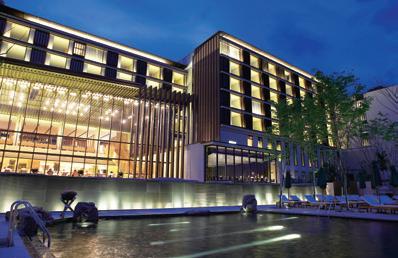
The exterior has a modern, art deco theme, but most rooms (200 in total) and many other facilities have a Japanese minimalist look (Western styling is offered in other rooms). Traditional Japanese yukata bathrobe attire is provided, and many guests move about the hotel in this comfortable clothing, even at meals, this getaway having a cozy hidden-away-fromthe-world feel. Each room has a stone mineralbath tub, looking out over valley or plain, and the Japanese-theme outdoor spa complex set out before the View restaurant is tiered, like a cascading waterfall. There are also Japanesetheme indoor spa facilities.
The list of other perks to explore, far too extensive to fully sketch out here, includes exercise/games facilities, DIY classes, plus free nighttime cultural-arts shows and guided morning walks on many-trodden up-valley trails.
Jiaoxi is laid out on a gentle slope, high point at the mountain base. The east coast railway line runs along the slope base where the flat plain is met. The town’s two busy commercial streets are just up-slope, running parallel. Jiaoxi’s colorless, odorless hot-spring waters are not piped down from the nearby mountain area; they percolate up on the slope from underground springs.
The entrance of the very narrow twoblock-long Tangweigou Park (also named Tangwei Brook Park) is on one of the town’s two main commercial thoroughfares, Jiaoxi Road. All about are tourist-targeting retail outfits, including one selling chili-flavored ice creams. The well-manicured park is set up like a public promenade. In the lower section, the heated waters of the brook that flows through the park are used in free public open-air foot baths. In the midsection is a public bathhouse with separate pools for men and women (fee), and in the upper section is a spa facility with private soak rooms (fee).
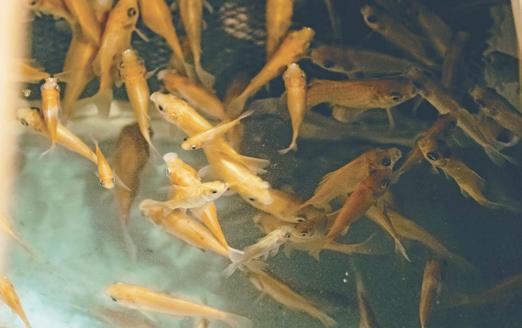
Ever dreamed of receiving a pedicure from a fish? Jiaoxi is the “fish foot spa” of Taiwan. At numerous inexpensive establishments in town, patrons place their feet in shallow pools of clear water filled with fish of various sizes. The fish come to work on your feet, nibbling, gumming, sucking, plucking off dead skin and whatever else that can be taken away. Beyond your appendage pedicure, it’s claimed this practice, popular around Asia, reduces foot odor, helps with athlete’s foot, improves blood circulation, and so on and so forth.
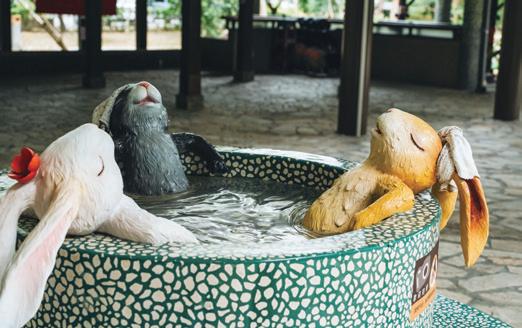
Single-story “Tree Spring Fish,” sitting beneath large shade trees, is beside Tangweigou Park’s foot-soak section (which has its own fish pools). Many Jiaoxi fish foot spas provide food and drink; here, picnic-table tops are fitted snugly over the small pools, on which you can place shaved-ice treats, slushies, fruit juices, coffee, tea, and cong you bing (scallion pancakes) while the fishies feast away in the hot-spring water.
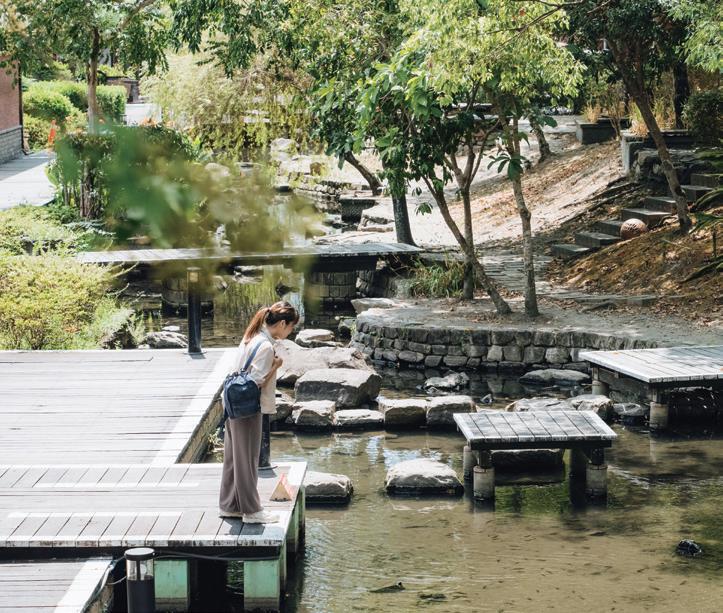
This unique business is in a four-story building formerly home to a long-in-the-tooth hot-spring hotel, given a head-to-toe transformation by a team of artists and designers, creating what is selfdescribed as “Taiwan’s first bohemian artistic bathhouse.” In Japan, young new owners are turning aged bathhouses into trendy hipster meeting spots; the owner wants to introduce this cultural innovation to Taiwan.

No public pools here, only individual rooms designed for two (discounts for solo soakers). Rooms have two spacious tubs or one extra-large tub, plus bathroom facilities. Larger rooms also have a Japanese-style sitting area, with wood floor and Japanese-style sitting cushions and low table. Each room has a special decorative theme – the “Hippopotamus” and “Jiaoxi Secret Places” rooms,
Compact Furo Café is a pretty place with a brightwhite façade and full-glass storefront portal providing an inviting look inside at the counter/ kitchen area. You place your order and head up the steep back stairs to the second-floor dining area.
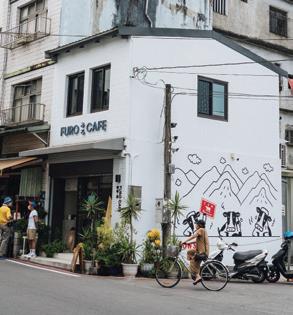
This is a Japanese-style café with many Japanese elements. “Furo” is Japanese for “hot-spring bath”; this is displayed in English and Japanese on the building front. All milk used comes from Hokkaido. The second-floor space is decorated to resemble a Japanese bathhouse, patrons along the room’s sides looking into the faux pool waters of the painted floor.
Beyond the coffees and teas/tea drinks, there are also cold, fruity “poolside” drinks. One recommended coffee drink is the coffee with plum wine, one “poolside” selection the Okinawa, a carbonated litchi beverage. The dessert treats are all handmade by a local patisserie master. The signature hot food is thick slices of toasted homemade bread with Thai milk tea, milk butter, and other spreads.

etc. There is room service, dispensing non-alcoholic drinks and hot foods.
A house bar, open daily from 6:30pm, features live music. The menu has both alcohol/non-alcohol drinks and snacks such as Yilan peanuts, fish-egg kimchi, and boiled “hot spring” eggs.
The “spring onion” in the name honors Yilan’s rich farming culture, particularly the celebrated Sanxing spring onion.

SPRING ONION (
) (03) 987-6929 No. 77, Sec. 5,
The young, striking-façade Lakeshore Hotel is in the front, i.e., oceanside, section of Su’ao town, in the seaside mountains just beyond the Lanyang Plain’s southeast corner. Directly before it is an unobstructed view (above the fifth floor) of Su’ao’s big multifunction port, navy ships parked directly before it, loading/unloading ocean-plying freighters on the right, and busy, tightly-packed Nanfang’ao Fishing Harbor to the far right a kilometer or so away. Behind is a low mountain topped by a large radar station, which can be reached by the popular steep Qixingling Trail. (We’ll visit both this trail and Nanfang’ao momentarily.)

Both hot and cold mineral waters are piped into guestrooms – hot sourced deep underground, cold from the springs in the short valley behind the just-mentioned mountain, which is home to the Su’ao Cold Spring Park (also to be visited forthwith). Some guestrooms have an outdoor balcony and washroom/soaking room with floor-to-ceiling windows and two conjoined marble tubs, for hot and cold spring waters respectively. Ask for a room on the fifth floor or above, to ensure unfettered outlooks. The hotel décor, in guestrooms and public spaces, is stylish European modern, with liberal use of stone slabs and wood paneling.

There is a mirror-like 132 sq.m. outdoor infinity pool, nonheated, on the highest full floor (one half-floor above this), with comfy patio lounge chairs. The unobstructed ocean-andmountain panorama makes this an area popular with guests day and night, including at sunrise, when the glowing orb rises directly out beyond the port. There’s also indoor hot-tub facilities on this level.

Other amenities include two sunny big-view reading
rooms on the two highest levels, a well-appointed basementlevel gym, and sun-drenched ground floor Chinese/Western restaurant. There are also “sunrise-chasing” and “wine tasting” activities, with gratis hot tea/warm snacks for the first and glass of fine wine for the latter. Special tours are also on tap, such as the guided Sunrise Canoe outing on Nanfang’ao’s sea side (in kayaks, actually) and the Voyaging Local Temples and Fishermen’s Life walking tour.
This large hotel is in a section of Su’ao town tucked into a very short, high-walled dead-end valley – yes, the one mentioned above – that is also home to the lauded Su’ao Cold Spring Park. The valley is a font of both hot and cold mineral waters, former attained through deep drilling, latter bubbling naturally to the surface. The hotel compound, surrounded by privacy-ensuring high walls, has creamy-white Italian Renaissance-style buildings along the outside and, in the center, a courtyard outdoor waterenjoyment area.

Guestrooms are in Japanese tatami style or classical European style, and have both hot and cold mineral waters piped in to their upscale spa tubs. The immaculate central courtyard is almost entirely taken up with pools, with both non-spring water and hot/cold mineral water. A large open-front villa looking out on the courtyard is also filled with mineral pools. Elsewhere, guests enjoy a massage/spa/aromatherapy center and separate male/ female nude-bathing rooftop pools atop the tall main building.

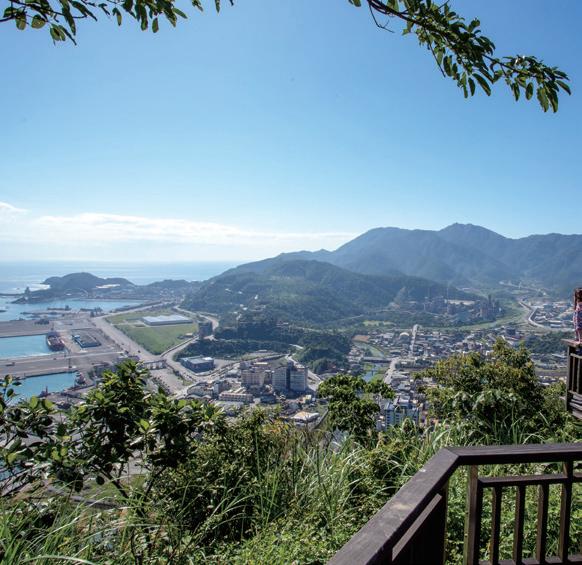
We’re headed into the cold season now, perfect for warming hot-spring dunks, but in the steamy Taiwan high summer there’s nothing better than a cold spring respite. The mountainbacked Su’ao Cold Spring Park complex, refurbished recently, is meant to resemble an ancient Roman open-air spa. There are free foot baths in the front area. Along the rear is a long, large pool below ground level (fee), with water deep enough for upto-neck sitting soaks. The naturally bubbly carbonated mineral waters here, about 22 degrees Celsius, are a global rarity, the only other such cold spring found in Italy. During Taiwan’s Japanese colonial period (1895-1945), Japanese merchants built the island’s first soda drink factory next door, using the nature-provided carbonated waters, which are safe to drink.
This attraction, a short walk from the cold-spring park, is right beside the RSL hotel. Its design also evokes a Roman spa, and its waters are from the same source and around 22 degrees. There’s a real community feel here. The long and exceedingly thin below-ground-level free public bath is cheek-to-jowl with the neighborhood’s old, tightly packed residences, and locals young through old treat it as a neighborhood water park. The end sections are foot baths; the middle is deep enough for fullbody soaks.
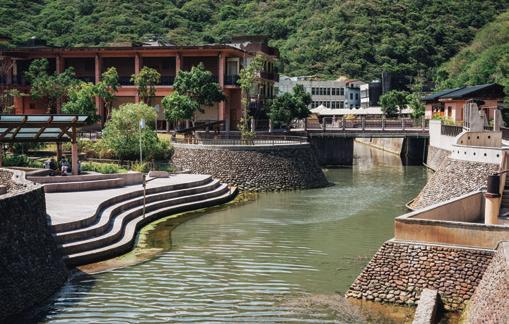


The trailhead for this trek is right beside Su’ao Cold Spring Park’s south entrance. “Qixingling” means “Seven Stars Peak.” The trail, which is steep in sections and bedecked with well-maintained wooden stairs in said sections, is 4,750m long and has a maximum elevation of 270m. The highest and most photo-worthy Su’ao port/ocean/mountain panorama awaits at lookout no. 6, reached from the trailhead in a steep, steady 25 minutes, comely butterflies entertaining you throughout. If time allows, continue upwards about 10 minutes further, where your reward will be bird’s-eye photo opps north starring the Lanyang Plain, central mountains, and iconic Turtle Island.

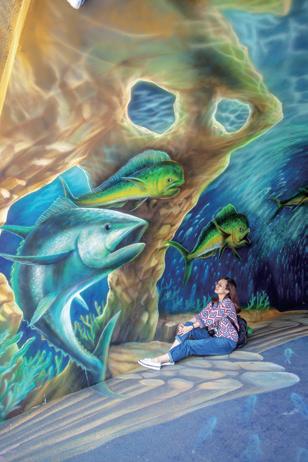

Nanfang’ao, located immediately south of the Su’ao port, has three narrow side-by-side harbors, all dedicated to fishing craft and all impressively cramped when all boats are in. The harbors are hidden from the sea by a long arcing headland. “Ao” means “deepwater harbor,” and “Nanfang’ao” translates literally as “south place deep-water harbor” –reference both to its position vis-à-vis Su’ao and position off the Lanyang Plain’s southeast edge. There are numerous quality harborside restaurants specializing in, of course, seafood.
The largest craft use the outermost harbor, smallest the inner. While they provide a great visual cacophony, go to the unharmonious fish market at the middle harbor’s mouth for visual, auditory, and olfactory cacophony. Boats are constantly mooring market-side to unload colorfully variegated catch for sale, all put on display dockside for buyer viewing.
At the middle harbor’s foot is the exuberantly ornate Nantian Temple, dedicated to Mazu, Goddess of the Sea, protector of seafarers. The local community decided to build the temple after, it’s said, she saved Nanfang’ao fishermen caught out in a major storm in 1946.
Another recommended local attraction is Neipi Beach, on the outside of the aforementioned headland, a wide, long, arcing sand/gravel beach overlooked by a cluster of chic bright-facade cafés and eateries.
Mural in Nanfang'ao Nanfang'ao Fishing HarborMountainous Datong Township lies just beyond the Lanyang Plain’s southwest corner, the long, wide, ruggedly beautiful Lanyang River valley slicing through the center. The population is predominantly indigenous, from the Atayal tribe.
A drive well up the river valley brings travelers to the curvaceous road that hikes up toward the clouds and mountain-topping Taipingshan National Forest Recreation Area, one of the country’s most popular such – site of a great logging station from the last century. Lower, near the recreation area’s down-mountain ticket gate, is a side road to the Jiuzhize Hot Springs.
The setting is riveting, cliffs behind, rocky roaring river before, great bursts of sulfurous steam rising from the Earth’s depths around the site. The super-heated waters bubbling up from deep below reach up to 140°C. There are both outdoor pools and private bathing rooms (including rooms for two) at the rustic-look spa.
Between the spa complex and the river is a cooking area, with large well-like raised pools gurgling with boiling waters, from which clouds of hot white vapor rise high. A favorite treat with Taiwanese visiting hot-spring sites is boiling eggs, corn, and other goodies in the waters. Here you can buy eggs and corn, dipped in the waters using thin, oblong wicker baskets.
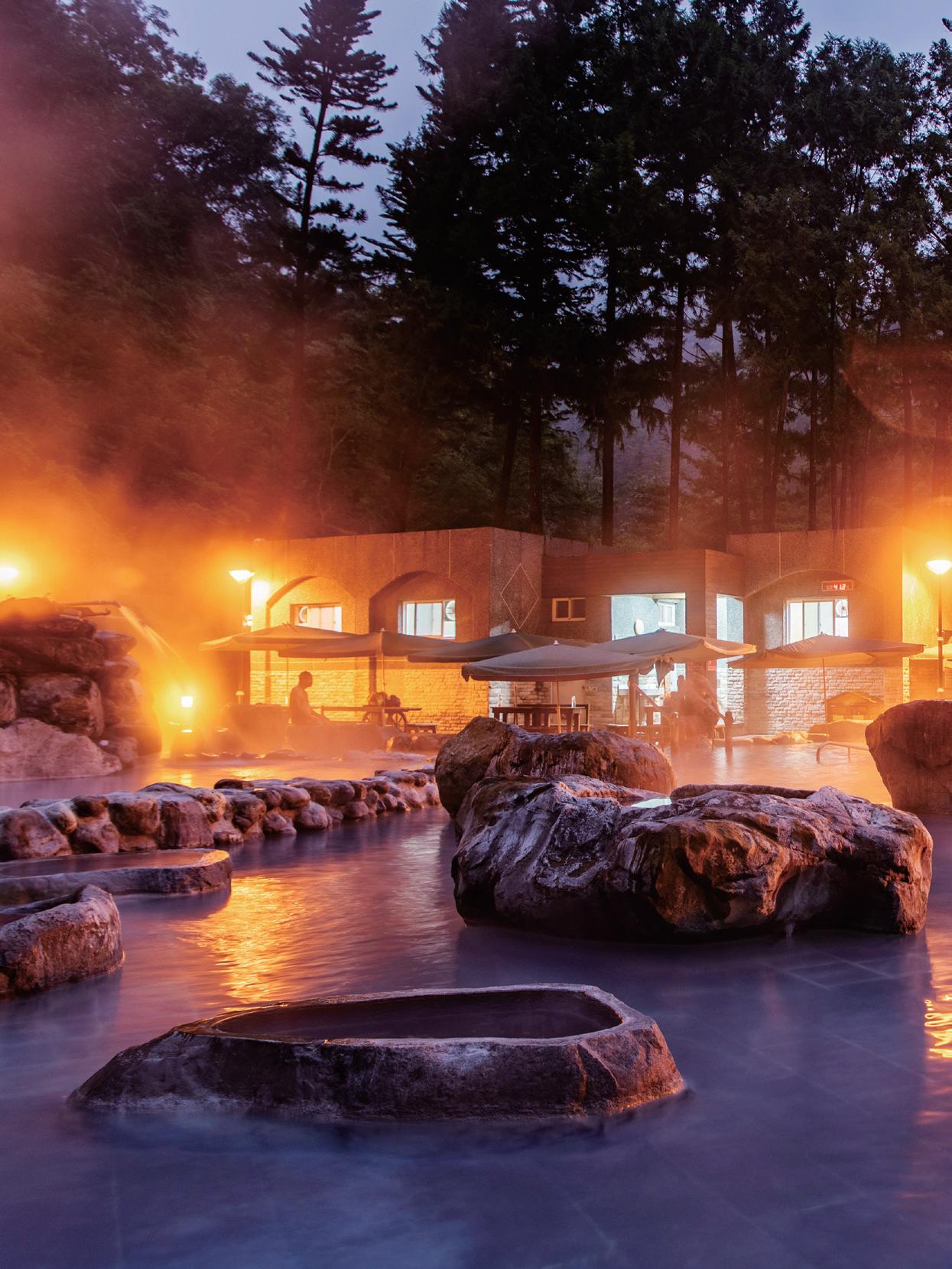 Jiuzhize Hot Springs
Jiuzhize Hot Springs

Just inside the mouth of the Lanyang River valley, the small Qingshui River emerges from a long, shallow side valley on the east side to spill into the Lanyang. Deep up this valley is Qingshui Geothermal Park, site of foot soak pools, well-like raised cooking pools, and bathhouse facilities. Development of this site started with Taiwan’s Chinese Petroleum Corporation, which dug wells exploring the area’s geothermal power potential.
Foot soak and cooking facilities were later added. There are two free foot soak pools, each covered for shade protection, and three cooking wells with no shade protection, steam billowing out of big stone-faced smokestacks in the middle. Buy yummy things to cook from the menu posted at the on-site wood-built service building’s canteen counter – peanuts, chicken/duck eggs, corn, bamboo shoots, shrimp, fish … even chicken soup. Recommended cooking times are posted for all items. Dunk them into the burbling water using a wicker basket (deposit required); the trick is to place lightest items at the bottom to prevent them floating up and out. Various other items are also sold, including coffee, soft drinks, popsicles, even cold draft beer.
Also on-site is a new Japanese-style wood-built bathhouse with eight outdoor and semi-outdoor soaking pools, four for women and four for men.

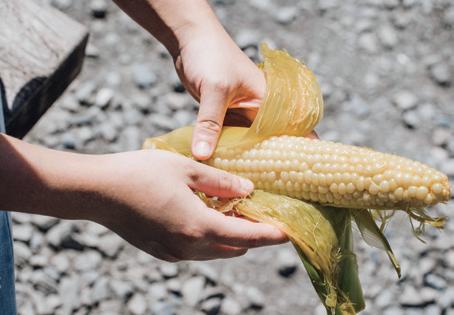
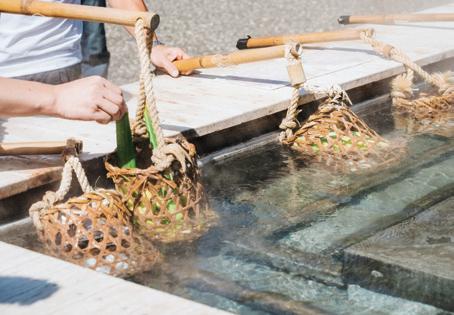
 TEXT RICK CHARETTE PHOTOS CHEN CHENG-KUO, VISION
TEXT RICK CHARETTE PHOTOS CHEN CHENG-KUO, VISION
In Taipei, reading this, and don’t know what to do with yourself today? Here’s just what the travel doctor ordered – a day-trip to the popular Beitou hot-spring district in the city’s north. The district is located at the base of the mighty Yangmingshan mountain massif that overlooks the city, and the Taipei Metro system delivers you right to its doorstep.
Sulfur Valleywas the first hot-spring resort area developed in Taiwan, launched just before the turn of the 20 th century by the soak-loving Japanese, who ruled Taiwan from 1895~1945. The main area is a short shallow valley which opens its mouth directly in front of MRT Xinbeitou Station and then runs uphill directly away from the station. Its gentle grade makes for easy walking outings taking in the numerous tourist draws packed close together along the way. Beyond the scores of quality hot-spring hotels and inns, the valley and surrounding hilly area are home to a forest of other tourist attractions, man- and nature-created. Here’s a day-trip whistlestop sampler of the “other” category.


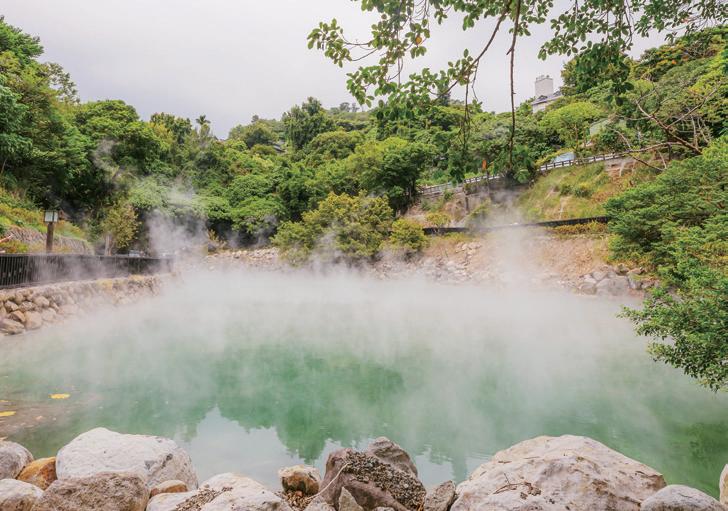
The leafy Beitou Hot Spring Park fills the floor of the valley’s lower, wider section. In a tiny side valley near the park’s uppermost point is Thermal Valley, also called Hell Valley. Why? Steam fills up the high-walled depression at the end of this deadend valley, rising from a shallow lake of bubbling and spitting sulfurous waters heated by the magma chamber deep below the Yangmingshan massif. These are the area’s hottest waters, 80~100 degrees Celsius. A wide pathway takes you around the lake.
In the hill area immediately above the valley is another depression, this one giant in comparison and much deeper, named Sulfur Valley. The landscape here is of another, scalded planet surface, percolating menacingly with steam vents, angrily bubbling hot-spring pools, rich-yellow sulfur deposits, and bare-rock high walls. A well-maintained pathway with some steep sections takes you through the valley from bottom parking lot to a roadway at top; cross to access the pretty Qingren (“Lovers”) Waterfall
VOLCANIC ACTIVITY There is no shortage of places in Beitou where you can get close to hot-spring sources Sulfur Valley pavilion Scalded landscape in Sulfur Valley Thermal ValleyThe aesthetically magnetic Marshal Zen Garden compound of traditional Japanesestyle has Japanese-built wood buildings overlooking the main valley from a high hillside perch. Today, the complex is home to an upscale restaurant, teahouse, and hotspring soaking facilities.

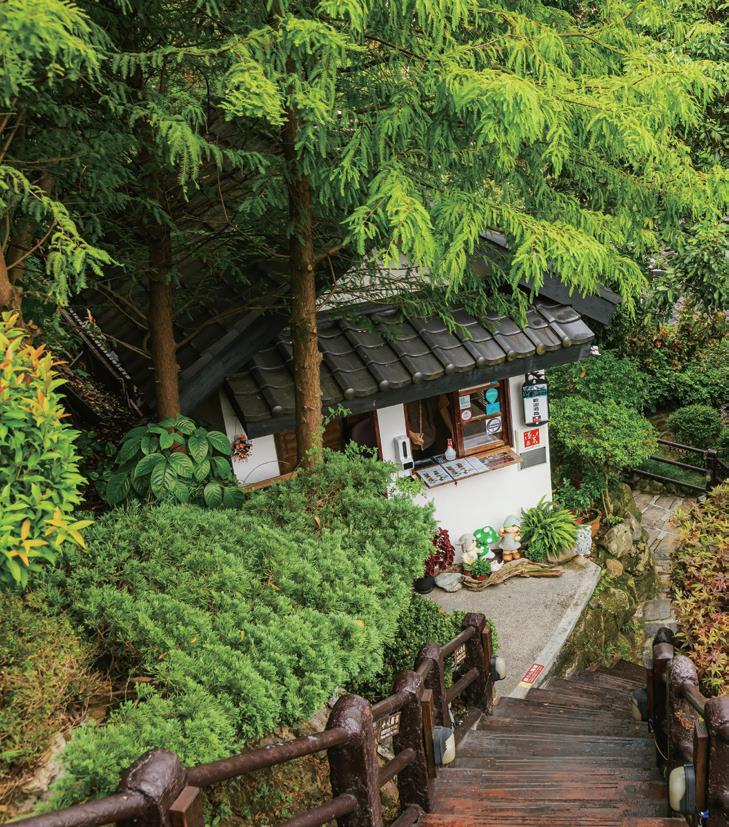

As you pass through the charming oldlook gate, which is at roadside by a roadway that snakes up from the valley bottom, the complex is laid at your feet, only the tiled rooftops in view. It’s reached via somewhat steep stairs – careful! The unobstructed view straight ahead is the hot-spring valley and, beyond, the Guandu Plain and iconic Mt. Guanyin, said to resemble Guanyin, the Goddess of Mercy, in repose (it really does).
In its beginning, during the Japanese era, this site served as a hot-spring inn, officers’ club, and short-stay R&R retreat for kamikaze pilots. In the century’s second half, it was for a time residence of the “Young Marshal,” Zhang Xue-liang, a Manchurian warlord best known for kidnapping Generalissimo Chiang Kai-shek in 1936 in the infamous Xi’an Incident. He lived to tell the tale, though placed under house arrest and moved a number of times while under the Kuomintang’s care.
On the compound’s right side as you stairstep in is a teahouse, a hot-spring bathhouse, and hot-spring foot baths, the last set in the middle of a lush, carefully maintained garden vivid with splashes of bright color bursting from the many different types of plants and landscape trees. On the left side are two conjoined buildings. The majority of their interior space is taken up by the restaurant; one large room, entered separately from
Foot bath area Restaurant at Marshal Zen Garden Stairs down to the Japanese-style buildings HOTthe outside via traditional Japanese-style sliding doors, contains a mini-museum looking in at the life of resident Zhang.
The bathhouse (added this century), lowest on the slope in the compound’s rear, has a collection of cozy private rooms for rent (two types of room, either NT$2,000 or NT$2,500 per each 90-minute session; third person extra NT$600). Each has a large soak tub set right against a window filled up with the aforementioned big-picture view. In the garden area, just outside the bathhouse entrance, is a number of parallel foot-soak pools available free to all visitors using any of the other facilities. The teahouse, on the upper slope just below the compound entrance, was formerly the dormitory for house prisoner Zhang’s guard force, which numbered in the dozens. All were Kuomintang intelligence officers.


The spacious restaurant, also featuring relaxing picturewindow overlooks, is in what were Zhang’s residential quarters. The cuisine is a chic blending of Chinese and Western elements, reflecting Zhang’s own comfortable mixing of Chinese and Western cultural elements. Four set meals are offered, ranging from NT$750 (for youngsters) to NT$3,500. In all, the emphasis is on light and healthy, and on the freshest seasonal ingredients. Each small-quantity course is a special nod to Zhang.

By way of example, let’s sit down to the 10-course “Zen Garden Seasonal Set Meal.” “Mountain Dwelling Good Wild Tastes” is the sixth, and main, course. Zhang’s first phase in Taiwan was in the mountains of Hsinchu County, where he developed a fondness for the fresh wild foods shared by the local native people. This dish features mountain boar topped with chopped nuts. His fondness for wildness is also echoed in the fourth course, a rich soup made with different Taiwan mushroom types.
Going back further, the third course is “Young Marshal’s Beloved Shrimp.” Zhang developed his love for shrimp/ prawns early on, and as an adult ate them most every day, “for health.” After the main course, rose petal wine is served to help with digestion. Zhang’s devoted second wife loved flowers, and often crafted healthy rose petal vinegar.

Immerse yourself in history, quite literally, with a soothing soak at the Long Nice Hot Springs bathhouse. This is the oldest bathing facility in Beitou, dating to 1907, opened by a transplant Japanese citizen. The exterior is in simple and natural traditional Japanese style. A thorough renovation was undertaken last decade, and though all is new the interior still retains a faithful “old Japan” unadorned simplicity. There are separate public baths for men and women, along with a number of private rooms for two people and for families. The public pools and all room baths feature natural stone.


The Beitou Hot Spring Museum, located in Beitou Hot Spring Park not far from the metro station, is perhaps this history-rich district’s most satisfying and important heritage site. The Victorian-style building of red brick and white stucco originally housed the Beitou Public Baths, opened by the Japanese in 1913 – Taiwan’s first public bath and long East Asia’s largest hot-spring public bath. A Romanesque pool and columns have been restored, as has the original large, breezy tatami resting room, and there are many intriguing artifact and info displays, including a fine collection of Japanese-period black and white photos and documentary film footage providing glimpses of yesteryear Beitou and Taipei.
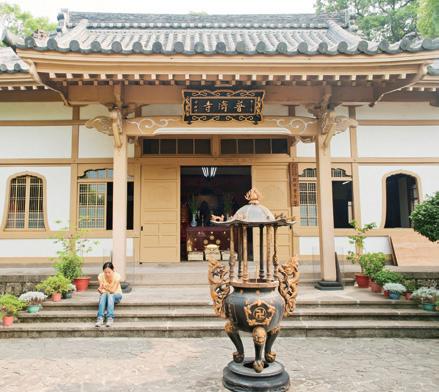
The Beitou Museum complex is right beside Marshal Zen Garden, also overlooking the hot-spring valley. This is another Japanesebuilt suite of buildings, constructed in 1921, that began life as the prestigious Kazan Hotel, long Taiwan’s best hot-spring hotel. During the Second World War it served as an imperial officers’ club and entertained kamikaze pilots on their final nights of mortality. The complex – done in Chinese Tang Dynasty style – is among Taiwan’s largest examples of Japanese wood-built architecture. The museum offers exhibitions on Beitou’s history plus Taiwan’s folkways and indigenous peoples, a tea ceremony experience, and a restaurant serving Kaiseki vegetarian fare.
Beitou Hot Spring Park ends outside Thermal Valley. Just a little further up the valley, on a hillside beside the road that traces the bottom to the valley’s head, is Puji Temple. This is one of Taiwan’s few surviving Japanesestyle temples. It was built in 1905, with significant donations from Japanese railway employees. The temple long enshrined the spirits of railway workers who gave their lives in the line of duty, and today enshrines the Tangshou Guanyin/Goddess of Mercy, guardian of the local hot springs. An immaculate, rarely seen Shingon Buddhist sect temple, it’s in a style popular in Japan’s Edo period.
Old bathing inside Beitou Museum Beitou Hot Spring Museum Puji Temple Xinbeitou Railway Station
This comely wood-built structure is right beside MRT Xinbeitou Station, in small, quiet Qixing Park. Today’s MRT Xinbeitou Line, a short branch line, uses the right-of-way of the line built by the Japanese to bring tourists to the hot-spring area. This is the original station built by the Japanese, opened in 1916. It’s most dramatic feature is the ox-eye windows in the steeply sloped roof, added in a 1937 expansion. Inside are displays on the station’s construction, short period films and photos, and a gift-shop area with many railway-theme tchotchkes. The quaint original ticket windows have been preserved, one now used as the gift-shop counter.
Another popular attraction in Qixing Park is the Qixing Park Hand Bath, a newer facility opened in 2018. The concrete bath stand has sides shaped to make it look like a solid block of Hokutolite stone. At the water basin’s bottom is a contour map of Beitou Hot Spring Park, created using upraised lines of concrete. You’ll be dunking your appendages in Beitou’s famed green sulfur hot-spring water, made even more therapeutic by the presence of the rare mineral radium. Lightly radioactive Hokutolite stone is formed through the crystallization of hot-spring sediments. Only one other place, Japan’s Tamagawa Hot Spring, has green sulfur radium hot-spring waters.
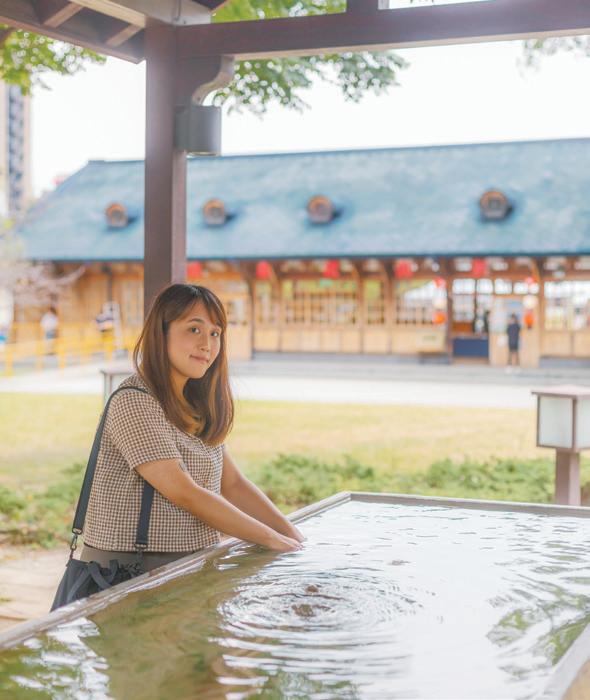
LONG NICE HOT SPRINGS ( 瀧乃湯浴室 ) (02) 2891-2236 No. 244, Guangming Rd., Beitou District, Taipei City ( 台北市北投區光明路 244 號 ) 6:30am~11am, 12 noon~5pm, 6pm~9pm (closed on Tuesday) NT$150 www.longnice.com.tw (Chinese) www.facebook.com/longnice
BEITOU HOT SPRING MUSEUM ( 北投溫泉博物館 ) (02) 2893-9981 No. 2, Zhongshan Rd., Beitou District, Taipei City (


9am~5pm
on Monday and public
hotspringmuseum.taipei
BEITOU MUSEUM ( 北投文物館 ) (02) 2891-2318 No. 32, Youya Rd., Beitou District, Taipei City ( 台北市北投區幽雅路 32 號 ) 10am~6pm (closed on Monday and public holidays) NT$120 beitoumuseum.org.tw www.facebook.com/beitoumuseum
PUJI TEMPLE ( 普濟寺 ) No. 112, Wenquan Rd., Beitou District, Taipei City (
(02) 2891-4386 9am~5pm

 TEXT AMI BARNES PHOTOS RAY CHANG
TEXT AMI BARNES PHOTOS RAY CHANG
Taiwan’s North Coast is a perennial favorite with Taipei urbanites seeking an escape from the daily grind. Easily accessed from the city, summer weekends see families flocking to the area’s sandy beaches. But when the mercury dips, a different kind of watery relaxation is called for – the warm embrace of a hot spring.
The existence of hot-spring bathing on Taiwan’s north coast can be attributed to an earthquake. On November 23, 1867, a massive trembler shook the coastal settlements, triggering a tsunami and inundating the shorefront with 8m-high waves. All but a dozen or so of the 700 houses built close to the sea were destroyed. Perhaps the only sliver of
positivity to come out of this geological upheaval was that when the aftershocks had at last receded, the locals of the Jinbaoli (modern-day Jinshan) area were left with newly-formed pools of seemingly limitless thermal waters.
The hot springs around today’s Jinshan and adjacent Wanli districts are noteworthy in that they comprise four different types of mineral-rich
waters: milky-looking sulfur springs (this is what gives the hot springs of Taipei’s Beitou District their distinctive aroma); salty underwater springs that have been filtered through the bedrock; odorless carbonic acid springs; and opaque, golden-orange iron springs. As the seasonal cool air draws in, it’s time to start stripping off and lowering yourself carefully into a steaming pool.
Governor-General Hot Spring in JinshanStanding close to the ocean, just where the Jinbaoli Stream flows into the Yuantan River, the Governor-General Hot Spring is a hot-spring resort with historical pedigree. Opened in 1938, it takes its name from the fact that for a few short years it was a guesthouse for the Japanese governor-general of Taiwan. The building abuts the usefully defensive Shitoushan promontory, so when Japan ceded Taiwan at the end of World War II the ROC military seized it, stopped up the pipes, and used it as a base until later abandoning it. For decades, the resort lay derelict
and unremembered save for a cameo appearance in the 1980s Taiwan TV drama You Can’t Tell Him . When the current owners inherited the building in 2000, it was little more than a shell. But rather than bulldozing the place, they carefully salvaged what they could and painstakingly recreated what had been lost – note the replica greenish glazed tiles, the original hinoki cypress ticket counter, and the restored “Imperial Pool.” You can even find display cabinets filled with sections of the original pipes and tiles in the second-floor restaurant.
the North Coast you can enjoy hot-spring



Jinshan and Wanli

The resort is known for its saltwater baths, and offers a range of hotspring facilities. Outside on the ground level before the main building you’ll find families enjoying the public open-air pools of various temperatures. Inside the building are exceedingly cute private rooms, most with dual hot and cold
pools that are set in selfcontained gardens. At NT$1,100 per hour on weekends, these are the most expensive offerings you’ll find here, but more budget-friendly private rooms are also available for NT$770 per hour (weekday rates are slightly cheaper across the board). However, hot-spring aficionados
seeking something a little more memorable should opt for the separate male and female open-air nude pools on the fourth floor. From here, men can gaze over the waves, while women can watch clouds grazing the tops of the distant mountains and follow the soaring flight of eagles wheeling through the skies.
The CT Green Bay Hot-Spring Hotel overlooks the northernmost tip of Emerald Bay Beach – a 1.3km expanse of sand with a fishing harbor off each end. On a sunny day, the Greek-styled whiteand-blue façade is like an inverse reflection of the high blue sky studded with flecks of white clouds, and standing on one of the seafacing balconies, enjoying the saltlaced air, it would be easy to forget that you’re less than an hour’s drive from downtown Taipei.
Guests of the hotel have unlimited access to the hot-spring facilities. Located on the ground floor, there are separate areas for men and women, each with pools ranging from cool to warm, to hot, to scalding. And as with most such places separated by sex, the hotel’s pools are enjoyed in the buff, all the better to let the restorative carbonic acid waters
do their work. The bathing areas are simultaneously sheltered from the general public whilst still being semi-open, meaning that you can hear sounds from the outside world and see the sky as you soak. The pools are open to children over seven years of age, so those with younger kids are better off opting for one of the rooms with an en suite hot-spring tub.
Aside from the hot-spring facilities, the hotel also offers a gym and a games room equipped with table football, billiards, air hockey, and a kids’ soft play area.

But it’s hard to see why you’d want to spend all your time inside when the hotel is literally just a minute’s stroll away from a sandy beach.
The waves here aren’t big, and the shallow incline of the bay makes it popular with families. After a day well spent in the hot-spring waters or the sea, guests can retire
to the hotel restaurant, or take a 10-minute wander north along the seafront to Guihou Fishing Harbor, where you can feast on freshly caught seafood.


Occupying a skinny alluvial plain, the Jinshan area’s fertile farmland is ideal for the hardy and humble sweet potato. In fact, Jinshan has become so synonymous with the dusty tuberous roots that July and August are filled with the Jinshan Sweet Potato Festival . Along Jinbaoli Old Street, stalls offer all manner of sweet potato-based delectables. You’ll find everything from the classics (roasted, deep-fried, steeped in sweet soup alongside chewy taro morsels) to the novel (candied and swirled into softserve ice cream).
Once you have eaten yourself into a sweet potato stupor, why not take a wander along the nearby trails of Shitoushan Park . The easy paths are well-paved and suitable for most abilities. From the cliff-top pavilion, you can see the Twin Candlestick Islets – a pair of sea stacks that protrude 60 meters out of the ocean.
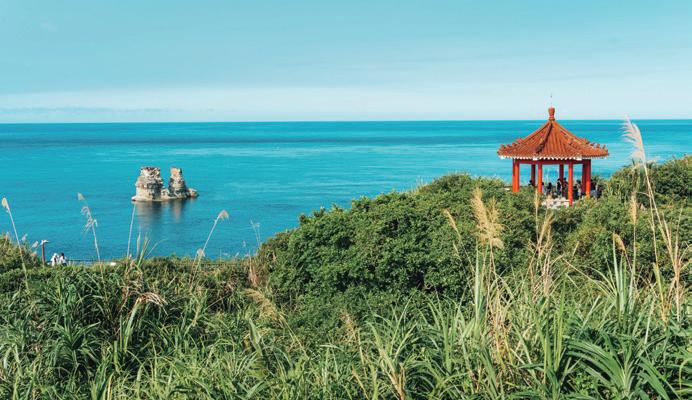

A local tale casts them as the remains of a grieving fisherman and his wife, a reminder of the many here whose lives and livelihoods depend on the sea. Visit at sunset to watch the sun sink behind far-off Yangmingshan National Park, setting close-by Huanggang Fishing Harbor ablaze as it goes.
Just a brief southeast drive along the coast from Jinshan, the Yehliu Geopark is located on a slender headland extending just over a kilometer into the ocean. Yehliu is a mainstay of the Taiwan travel experience, and for good reason. The internationally recognized geopark is home to numerous fascinating natural limestone sculptures, many with fitting nicknames: Fairy Slipper, Ice Cream Rock , and most famous of all, the regally weathered Queen’s Head.
Another of the Wanli area’s top spots is the busy Guihou Fishing Harbor . Here, visitors can pick out

their choice from the day’s catch and have it cooked up on the spot (or packed to take home). Foodies come to sample the three varieties of Wanli crab – three spot crab, flower crab, and stone crab – each distinguishable by the unique markings on their carapaces. The crabs are caught in specialized crab nets by experienced crab fishers year-round, but the meat is reputedly at its best between September and December.
Not being a seafood eater myself, I had more fun wandering around the edge of the harbor, peering at the fish darting through the waters and spotting the oversized, grinning anthropomorphized crab sculptures in the adjacent Guihou Crab Park .


Yilan County’s south provides quality camping experiences in the quietest of environs just 90 minutes to two hours from Taipei’s thrumming. There is little light pollution, opening up the starry skies for you at night. Here, for your consideration – three of the region’s best and most popular campgrounds.
 TEXT RICK CHARETTE PHOTOS RAY CHANG, VISION
Na Sun Na Gu Leisure Farm campsite
TEXT RICK CHARETTE PHOTOS RAY CHANG, VISION
Na Sun Na Gu Leisure Farm campsite
This campground is located in mountainous Nan’ao Township deep up a mountain valley formed by the Nan’ao South River, which joins up with its north sister just outside the town of Nan’ao before traveling the short distance to the conjoined waterway’s Pacific debouche. The town is pierced by Provincial Highway 9D, the twisty-thrilling original coastal highway between the Yilan County port city of Su’ao and Hualien County’s Taroko Gorge area.
The owner-operator is an Atayal tribe member. “Na Sun Na Gu” means “my home” in the Atayal language – his goal has been to create a relaxed community feel among all who spend time here, staff and campers. His house is on-site, and he spends much of his time moving around the grounds. Many of the
staff are Atayal, especially those handling the river-fun experiences (see below). There are two native settlements in the valley: Wuta, passed on the drive up the valley from the highway, and Jinyang, deeper up the valley. There is little valley development past Wuta, save for campgrounds and scattered farm plots.

Na Sun Na Gu is located right beside the valley’s sculpting river, which is shallow enough to wade across in most places and at most times except after heavy rains and during/after typhoons. It provides camping facilities along with easy, family/grouporiented guided river-tubing and river-trekking experiences (beyond campsite fees, extra fees for tubing/trekking experiences). Campers are also free to visit the riverside area on their own, with adult accompaniment for kids
strongly advised. No, despite the “farm” in the name, you’ll be enjoying no farm-related fun time at Na Sun Na Gu.
A variety of camping-style options is available: campsites with turf or pallets, glamping sites, camper trailers, and even chalet accommodations. High-quality communal-use bathroom and shower facilities are provided (hot water 24h), as are refrigerators for food/beverage storage, spin dryers, and water dispensers. If you don’t have some or any needed camping equipment, everything is available for rent. The check-in area also has food/beverage supplies for sale.

This attraction is in a busier location than Na Sun Na Gu. It’s in Dongshan Township on the edge of Yilan’s Lanyang Plain as it meets the mountains on its south side, seated right beside the bikeway/pathway encircling popular Meihua (Plum Blossom) Lake. You have immediate access to the lake’s various teases – lake-encircling walks or rental-bike rides, e-boat tours, ice-cream and cold drink stands, and a number of breezy-seating cafés.
Your lake view from the grounds takes in Meihua Lake’s scenic island and island-connecting pedestrian suspension bridge on the left and, on the right, the lofty and colorfully photo-demanding Sanqing Temple looming over the lake from its forest-surrounded mountainside perch high above the lake’s south side. The sound of frolicking tourists fades to crickets after the lakeside shops close in the late afternoon, returning only late morning next day.
The sleek-façade camper trailers are separated from the lake-encircling bikeway by a grassy lawn and children’s play facilities. There are 10, lined up in two rows of five with a pathway in between. These are roomy, luxurious trailers, with ensuite showers. Each comes with a wood-plank patio outside fitted with a retractable shade awning, plus comfy wicker furniture. Prices start at NT$4,200 weekdays (2 people; NT$1,200 for each additional person older than 12, NT$800 for kids aged 7~12).

Beside the campers is a drinks bar, offering both nonalcohol/alcohol refreshments, plus light foods that in fact are from the menu of the Tan A Camper Café, right next door, seen through a line of shade trees.


Just to the north of Tan A Camper is the Meihua Lake Leisure Farm. Here, the “farm” in the name is no misnomer – this place was long a farm before tourist perks were added in recent times to earn the adjective “leisure.” This is a wonderful getaway spot for family outings, with camping sites, campers, and cottages, BBQ, restaurant, and café facilities, bike rentals, a paintball area, fitness course, and water-play pools for kids, plus an array of experience activities. Farm sections include an organic vegetable area, cute-animal area, aquatic ecological area, beetle ecological area, and vanilla plant area. Among the experience activities – all requiring fees separate from your accommodations – are guided culture/eco tours and DIY aiyu jelly and vanilla cookie courses.
In the cottages, accommodations range from an Elegant Single-bed Double Suite (starting at NT$2,000) to a Warm 8 People Suite (starting at NT$5,000), and an Attic Four-bed 8 People Suite (starting at NT$7,000). Room service is available.
Campsites rent for NT$800 on weekdays and NT$1,000 on weekends; grass sites and cement-square sites are available. Campers must provide their own tents and related items; shade table and chair sets are provided.

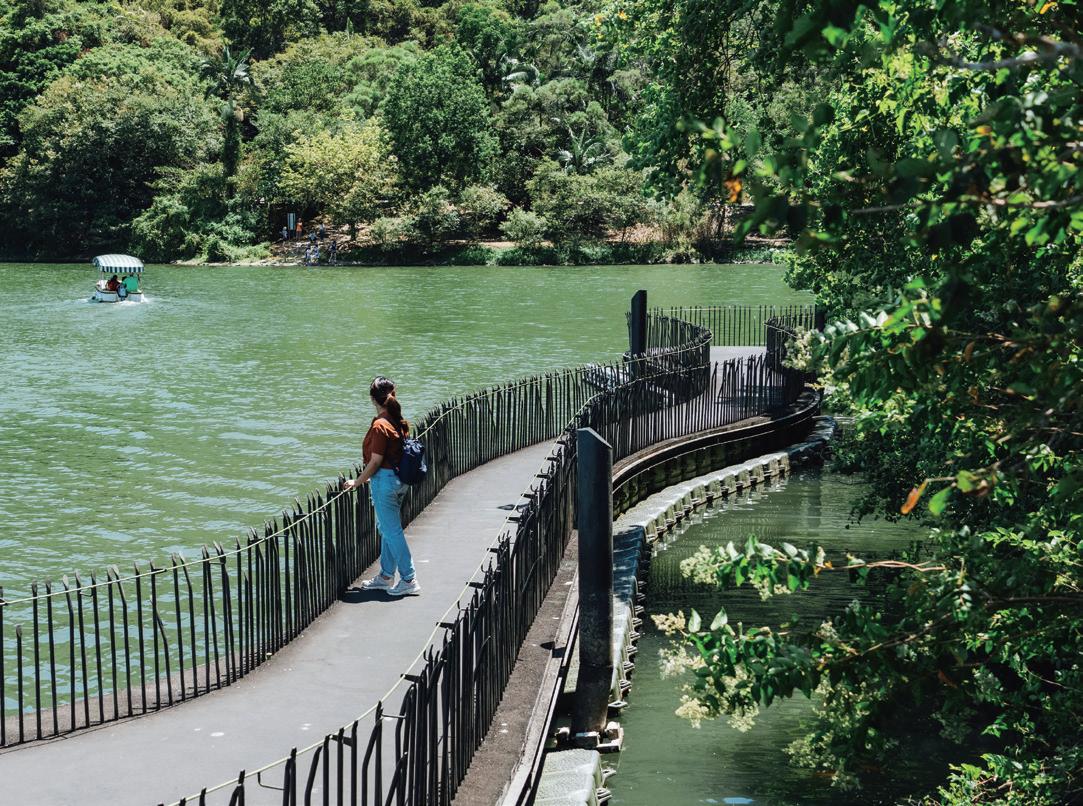


Up the Nan’ao North River is an Atayal village named Jinyue. The Lupi (“Deerskin”) Stream exits from a narrow side valley here. Heading up that valley from the village is a pleasant, wellpaved single-lane forest road which delivers you to a popular trail that then brings you to the glorious 25m-high Jinyue Waterfall (parking lot by trailhead). This trek involves stream-tracing, so booking with one of a number of adventure groups based in Taipei or Hualien City is requisite. Another option if you’ve limited time is enjoyment of the paddling pools by the trailhead and a wade up to an 8m-high waterfall you can (safely) ride over for a cooling deep-pool plunge below.
The north end of wide and long gray-sand Mystery Beach is where the aforementioned combined waters of the Nan’ao South and North rivers pour into the Pacific. There’s a small, always half-asleep farming village behind the beach on the river’s south side, Hai’an – here vehicles can get to/onto the beach via cuts in the high dune. The beach runs kilometers to the south, much of the way hidden away by high bluffs. There is indeed a feeling of isolation and mystery, save perhaps on weekends/holidays, when the heart-slowing sound of the waves rhythmically crashing ashore may well be accompanied by the asynchronous music of dune buggies. Because of the strong tide-rips, swimming is prohibited here. Many visitors head down-beach about 4.5km to view the large sea-erosion caves – but promise to be aware of weather and tide conditions at all times.
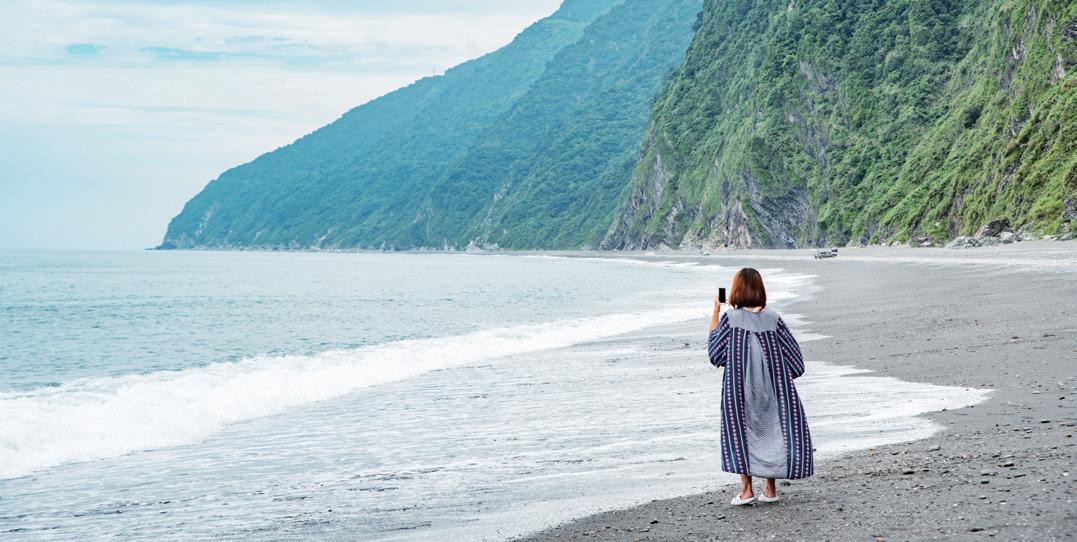 River tracers heading to Jinyue Waterfall
Taking in the pristine environment Mystery Beach in Nan'ao
River tracers heading to Jinyue Waterfall
Taking in the pristine environment Mystery Beach in Nan'ao

The Dongshan River EcoArk is southeast of Luodong town. This is an environmental preserve established to promote green tourism. The “ark” comes from the geography – the Dongshan River flows by on the north side, and a branch waterway, part of an old river section, reaches south and then southwest (not quite reaching back to the river), creating a green “land ark.”
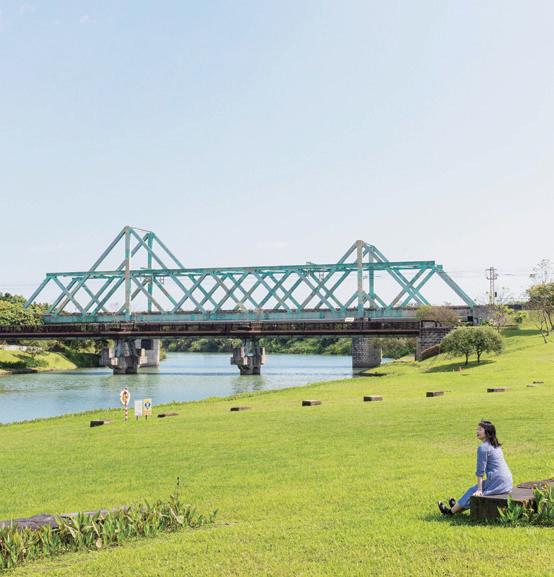
The preserve, interlaced with curving bikeways/pathways and sprinkled with birdwatching platforms and children’s play facilities, is a haven for endemic and migratory birds, reptiles, amphibians, and native vegetation. On the branch waterway is a riverboat landing from which electric boats launch you on guided tours providing explanation of the ark and surrounding area (fee).
This airy, cheery café is set amidst verdant farmland west of Luodong, the mountain-backdrop of the roughly triangular Lanyang Plain in clear view in three directions, the café surrounded by neatly rectangular paddy fields on all sides. The scenery makes that deep, rich coffee you’re lingering over even better! The bright glass-wall café is on the first floor of an architecturally striking building with a sharply slanted roof that evokes the “head” of Yilan’s iconic Turtle Island, in view out to sea from all around the plain. “Wu Gui Dao” means “Turtle Island.” The claim to fame here is kumquat products (the owner’s family has its own brand) – be sure to try the palate-bedazzling kumquat lemon tea and melodious kumquat coffee. The house snacks and cakes are all crafted with fresh Yilan County produce.
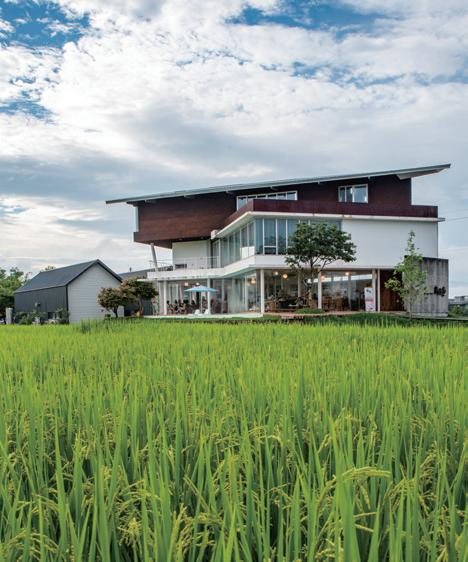

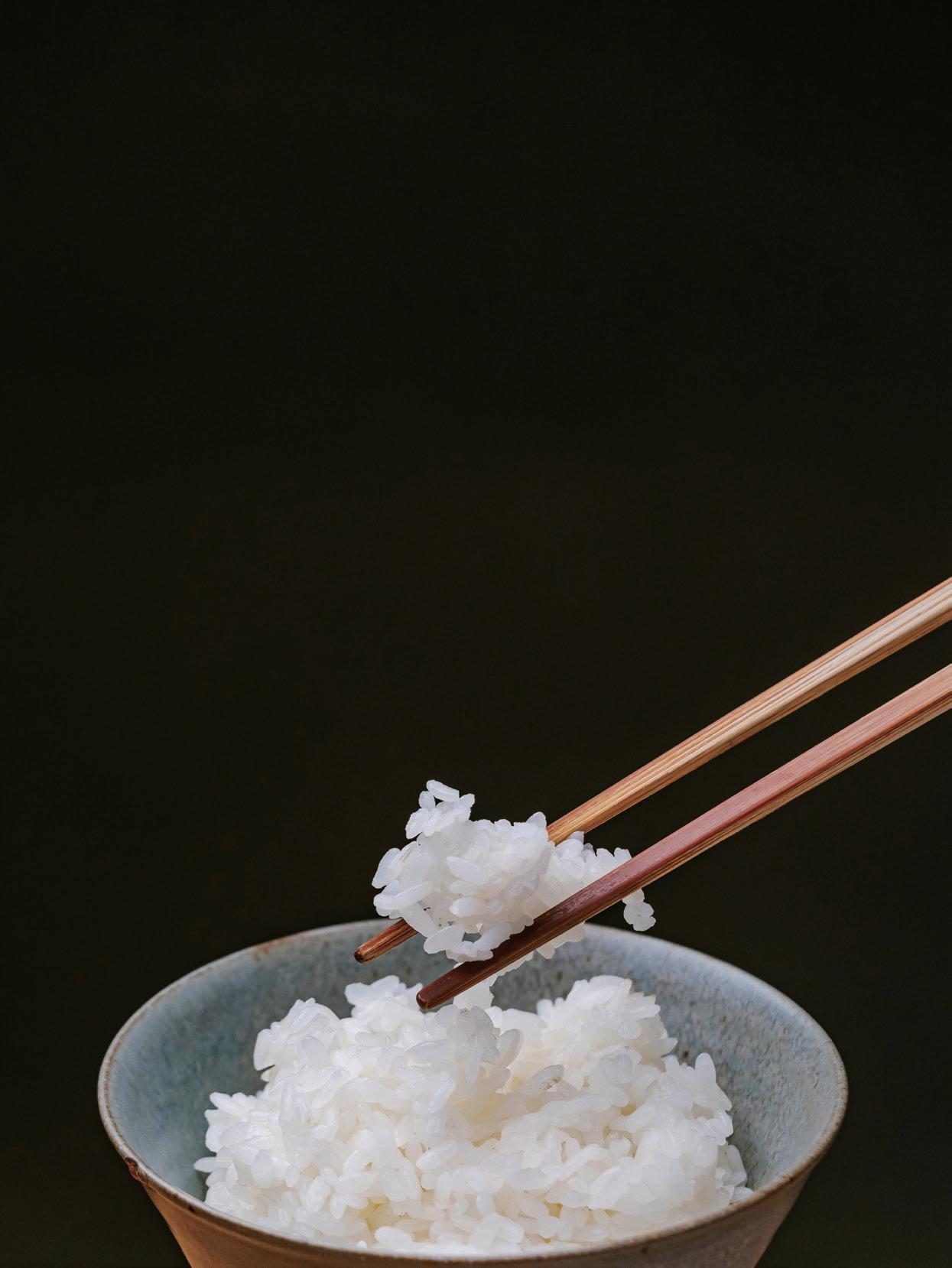
Rice is by far Taiwan's most important food crop. So important in fact, that roughly half of the country's arable land is given over to cultivating it. And for good reason, too, because for many Taiwanese, not a meal goes by in which rice does not feature in some form or other. To prove the point (if indeed it needed proving), Travel in Taiwan recently sampled some of the many rice-based offerings available in Taipei.
OnceI was fool enough to tell my Taiwanese mother-in-law that I was cutting out carbs and would therefore not be eating any rice with our evening meal. She stared at me as if I had lost my mind, before exclaiming, “But if you haven't eaten rice, you haven't eaten!”
I assumed her to be speaking metaphorically; however, on further thought, I realized there is literal truth in that statement. Rice, in various forms, permeates Taiwanese cuisine like no other ingredient. It forms the basis of several breakfast dishes (congee, rice balls), the worker's lunchtime biandang (a lunchbox usually filled with rice, vegetables, and meat), and popular desserts such as mochi (a chewy confection made from pounded sticky rice), not to mention any number of festival dishes. Indeed, it should come as no surprise that one is often greeted in Taiwan with the phrase “Chi fan le mei ” – literally, “Have you eaten rice yet?”
 TEXT OWAIN MCKIMM PHOTOS CHEN CHENG-KUO
TEXT OWAIN MCKIMM PHOTOS CHEN CHENG-KUO
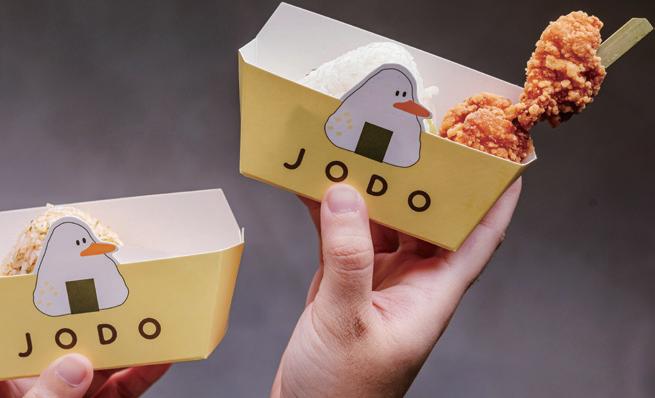
Starting our day's rice odyssey with the morning meal, we begin by searching out a mainstay of the Taiwanese breakfast – a fantuan, or rice ball. In Taiwan, these are normally long oblongs of glutinous rice packed with any number of fillings, from the traditional pickled greens, radish, and pork floss to more recent, Western additions, such as cheese and bacon. These clingfilmwrapped cudgels of hearty carbs can be picked up at stalls and small shops all over the country, and make for a truly substantial breakfast or, at the weekend, a handy snack to take on a hike. They do, however, tend to be a little heavy on the stomach. A much lighter version is the Japanese-style fantuan that can be found on the refrigerated shelves of the island's convenience stores. Pop into a 7-Eleven or FamilyMart and you'll see rows of triangular rice balls, wrapped tightly in seaweed, with nuggets of pork floss, tuna, grilled chicken, crab paste – the list goes on –nestled tastily within.
It is this type of Japanese fantuan, rather than the Taiwanese style, that is served up at Jodo Rice Ball and Coffee. Located in the student district of Gongguan close to National Taiwan University, Jodo offers light meals consisting of Japanese-style fantuan, veggies, and a meat or fish skewer, along with the option to order rice balls à la carte. The fantuan themselves do not come with a filling as they do in convenience stores; rather, the rice itself is subtly flavored so that with each bite one can fully appreciate the texture and flavor of the rice uninhibited. Jodo uses a mixture of two types of rice, daoya youji mi (mi is the transliteration of “rice”) from Yilan County – an organic rice grown with the help of ducks that keep the paddies pest-free – and yuxiang mi from Hualien County, which has a subtle flavor of taro.

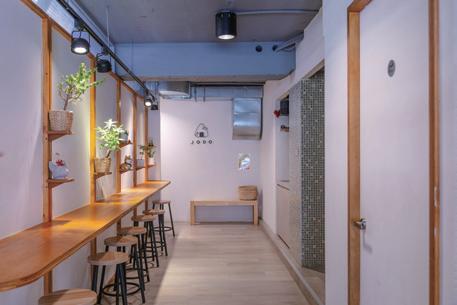

These varieties were chosen, according to the shop's spokesperson, because of their distinctive “Q” texture. “Q” is a somewhat untranslatable Taiwanese concept that means something akin to “bouncy,” “springy,” or “chewy,” and describes the texture of good pudding, thick noodles, or even someone’s perm. Jodo's fantuan are very Q.
We tried a variety of the flavors on offer, and my personal favorites were “special sauce,” in which the rice is mixed with a spicy house sauce made form Sichuan peppers, seven spice powder, sesame seeds, and other fragrant ingredients; the delicate “floral perilla,” made with perilla (a member of the mint family) and roselle; and “seafood,” imbued with subtly salty pollock roe. The rice balls cost NT$45 each, while a set meal containing two rice balls, veggies, a boiled egg, and a meat/fish skewer costs between NT$170 and $250.
While there is nothing particularly exciting about rice itself, the way it is being presented in new ways by young restaurant owners is quite intriguing
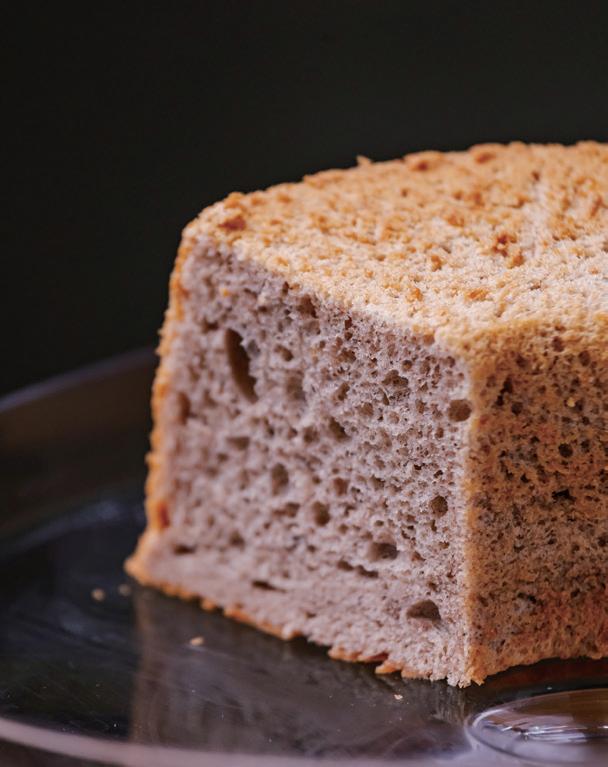
After sampling Jodo’s flavored rice balls, for lunch we go for a more classic “no-frills” way of eating rice – steaming hot, fresh from the rice cooker, and used as an accompaniment to meat or vegetable dishes. Of course, when eaten in this way, “naked,” the quality of the rice itself becomes doubly important. A cheap rice might be too claggy, or bland, sullying the entire meal, while a good-quality variety will be fragrant, flavorsome, and, indeed, Q! One place that is fighting the good fight when it comes to promoting high-quality locally grown rice – as well as other locally sourced
ingredients – is Taiwan Rice Dining Hall, a small eatery set in a renovated historical building that is itself hidden in the gap between two modern tower blocks near MRT Technology Building Station.
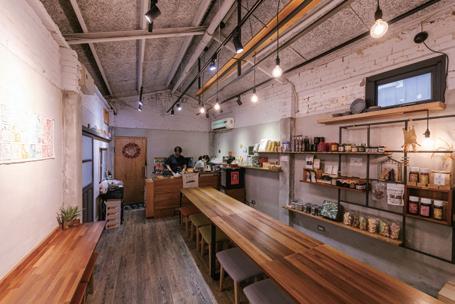

The restaurant serves simple set meals consisting of a bowl of rice, a main dish, two side dishes, and soup. There is no fixed menu, and the set meal on offer changes daily. (Potential patrons can discover the restaurant's upcoming daily dishes a week in advance on its Facebook page.)
Exacting about the ingredients she uses, owner and operator Liu Fu-ying often travels personally to various rice-growing areas in Taiwan, working with local farmer associations to find the best organic-rice growers. Today's dish is rice from Chishang Township in Taitung County, more specifically a variety named Kaohsiung 139 which thrives particularly in the good weather of eastern Taiwan and is known for its rich flavor and springy texture, along with sea bass from
 Light and fluffy cake
Light and fluffy cake
Chiayi County, which is topped with locally-grown coriander, onions, scallions, and tomato and drizzled with a sauce of lemon juice and plum wine, a combination whose mixture of salt and sourness serve to bring out the natural sweetness of the rice. Soon enough, our chopsticks are clattering in our empty bowls.
As to what happens to any leftovers at the end of the day – it would, after all, be a tragedy to throw away such high-quality rice –Liu ferments any unserved rice into a sweet, non-alcoholic beverage called ganjiu. To the rice is added a particular mold which proceeds to break down the carbohydrates within into constituent sugars, creating a nutrient-rich drink that is both creamy and “moreishly” sweet.

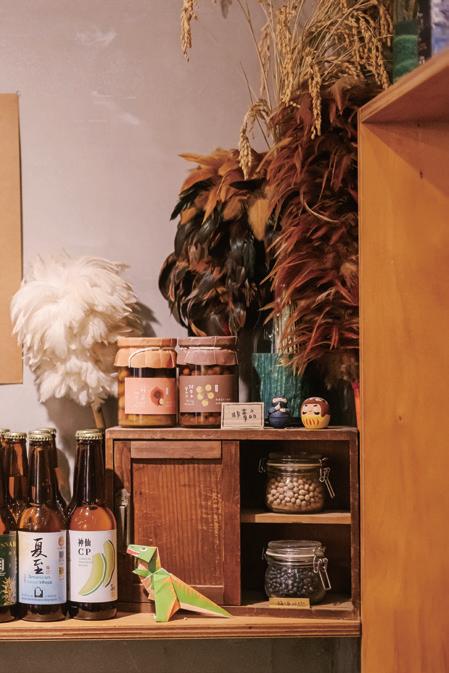
To finish, we are served a cake made using flour ground from a redhusked rice variety from Hualien. The cake is made especially for Liu by a local pâtisserie and is as light and fluffy as a cloud, emphasizing the true scope in both taste and texture that rice-based dishes have to offer.
Meals at Taiwan Rice Dining Hall vary in price depending on the day, but usually cost about NT$400 per set.

For dinner, we fall back on a real old classic. Lu rou fan , or braised pork rice, is often called Taiwan's national dish. Like all the best food, it is absurdly simple: a bowl of plain boiled rice topped with a generous dollop of meat sauce – bite-sized chunks of pork braised and then left to stew, often for more than a day, in soy sauce and spices. The dish has its origins in Taiwan's poor agrarian past, when pork was something of a luxury. In the early days, the dish was a way to make use of less desirable off-cuts. Nowadays better cuts are used, but the dish retains its status as one of the most affordable dishes, with a bowl typically costing between NT$25 and NT$40, depending on where you are in the country. The dish can easily be found in any of Taiwan's cities – mostly doled out by small hole-in-the-wall eateries or roadside/night-market vendors. Lo Bah Png near MRT Songshan Station, however, offers a sleeker environment for guzzling down the dish – the shop is bright and clean with a modern-industrial décor – though its version loses none of the rich, greasy goodness that characterizes this down-to-earth dish of the people.

The key to a good lu rou fan is of course balance between the dish's two main elements, the rice and the meat sauce. Mr. Lin, who apprenticed under a lu rou fan master of 40 years' experience before setting up his own venture, explains that he uses a particular rice from Xiluo Township in southwestern Taiwan to create the perfect marriage of textures for the classic dish. The rice used has a more granular texture than many other varieties, meaning that it can hold up more robustly to the wetness of the sauce and avoid turning into an unpleasant mush.
Along with our braised pork rice, we also tuck into a migao –or tube rice pudding – a cylindrical tower of sticky rice that is first fried with soy sauce and then steamed in a cylindrical mold so that it holds its shape, before being topped with lashings of braised pork and a sprinkling of fish floss. Here, the outer layer of rice has been cooked into a firm crust, which, when cleaved with one's fork, gives way to a tender inner core – flavor, texture, and sauce all combining into a harmonious and mouthwatering whole.

large bowl of hearty braised pork rice at Lo Bah Png will set you back just NT$45, while a tube rice pudding costs a mere NT$35.


As mentioned above, Taiwanese-style fantuan are more commonly eaten as breakfast fare; however, there's no reason why such a savory delight need be limited to the morning hours. Should you find yourself feeling peckish towards twilight, you may well find fantuan being served in some of Taiwan's many night markets. One such location is Joy's Love, located in an alley behind Guang Hua Digital Plaza – Taipei's main tech market. The stall boasts a huge menu of different fillings – corn and vegetable, fried shrimps with scramble eggs, beef with garlic sauce – with the two most popular according to the owner being Thai basil chili pork and pan-fried pork chops. Unlike the Japanese-style fantuan found at Jodo, which can be eaten in a few bites, the Taiwanesestyle fantuan served here are designed to combat a more profound hunger, and in truth are less of an evening snack and more of an entire evening meal. Depending on the filling, each fantuan costs between NT$70 and NT$100. Don't be surprised if you get through half and have to save the rest for tomorrow's lunch.



After the rice-flour cake at lunch, our second foray into the confectionary side of rice comes just a few paces away from Joy's Love Rice Balls at another stall, “Ayu White Sugar Rice Cakes.” Appearing something like the American corn dog, these sweet, sausage-shaped desserts-on-a-stick are formed from glutinous-rice flour dough before being deep-fried and then dipped in a flavorsome powder or sauce. Gluttonous to a fault, we try several flavors – black sugar, condensed milk, sesame, peanut, cinnamon, and plain sugar. Eaten piping-hot, they offer a crisp first bite that gives way to a donut-like interior. While each flavor has something to recommend it, the condensed milk is a personal favorite, coating the rice cake in a decadent, sweet oozy glaze. Try one for NT$20 or grab three for NT$50.

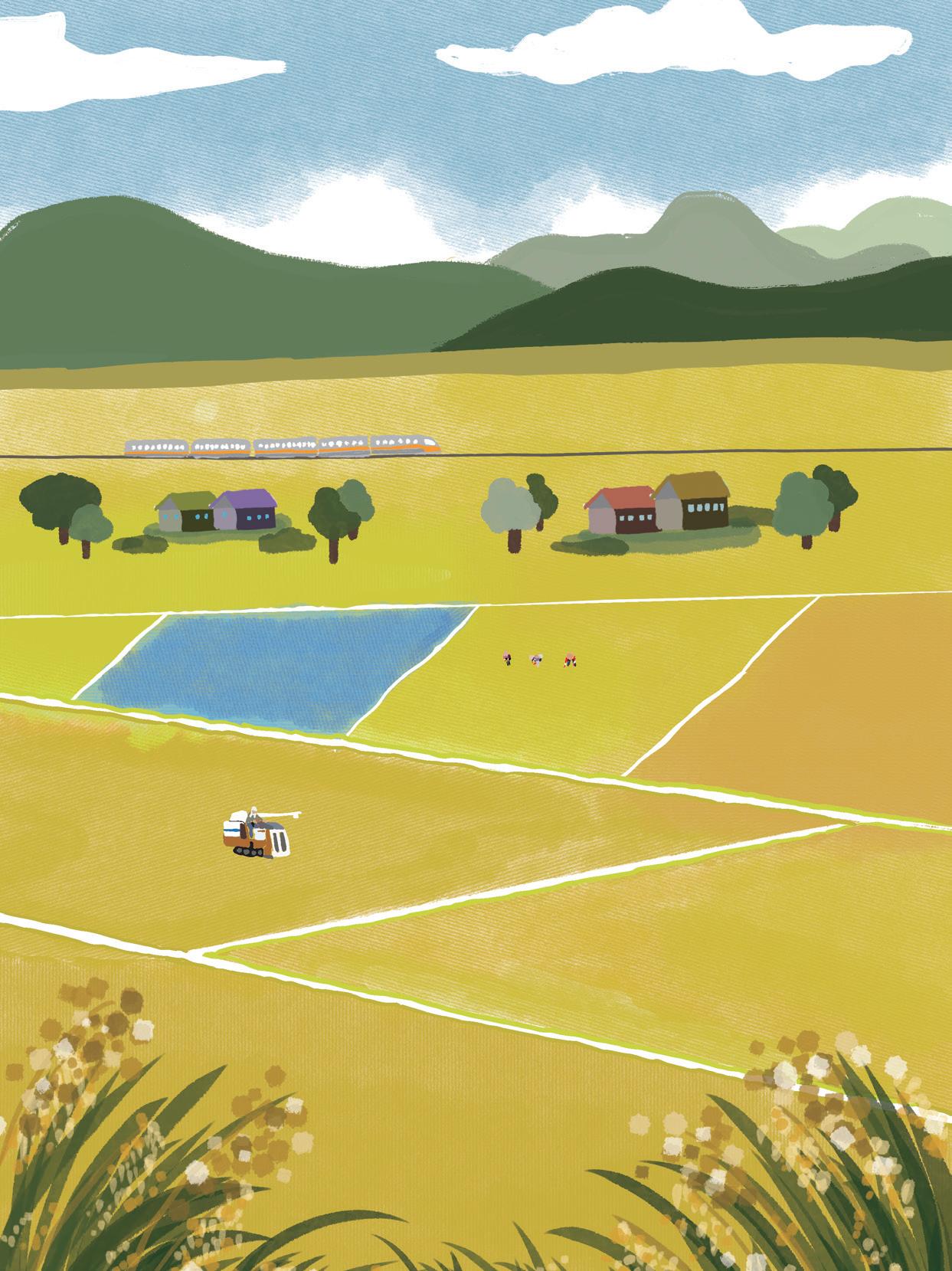
Apart from the “Big Three” – Spring Festival, Dragon Boat Festival, and Mid-Autumn Festival – there are a number of other special dates on the solar calendar for which people in Taiwan observe special customs and traditions.
Ifyou examine the position of the sun and the length of days and nights throughout the year, you can determine the day when the sun rises to its highest position in the sky (and also has the longest daytime of the year) and the day when it’s highest position is the lowest for the year (and the daytime is shortest). These days are known as solstices, the better known of which is the summer solstice, which usually falls on either June 21 or 22.
Solstices are observed in the Chinese solar calendar, which is equally divided into 24 solar terms ( jieqi ). The summer solstice is
known as xiazhi, and the winter solstice as dongzhi
In the past, when Chinese society was agrarian, the solar terms were commonly known and served as important dates that helped farmers to make important decisions, such as times for sowing and harvesting. In Taiwan today, you’ll hardly find a person who can name all 24 of the solar terms, but nonetheless, some of them are still relevant in terms of customs and traditions.
This, the first solar term of the year, falls on either February 3 or 4 and marks the beginning of spring. For many, this is an important date with implications for the rest of the year. It’s believed to be a good day for praying to the gods and a bad day for getting into arguments. Some believe it’s best to praise at least five other people to ensure good luck for the rest of the year. Since ancient times, people have been eating fresh spring rolls on this date, the rolls consisting of a thin wrapping filled with various fresh vegetables and spices.
The summer solstice is the 10 th solar term of the lunisolar calendar. At midday on this day, if you happen to be in a place where the Tropic of Cancer passes through Taiwan (there are markers in Hualien County, Chiayi County, and Penghu County) the sun will be directly above you, casting almost no shadow. In terms of weather, xiazhi marks the end of the plum rain season and the start of the typhoon season. Traditionally, noodles are eaten on this day and it is believed that getting a haircut is a bad idea, since it might bring bad luck.
This solar term falls on August 7 or 8. While still in the midst of summer, it is seen as a reminder that autumn will come soon. In contrast to lichun, eating spicy food on this day is not recommended. Also, this is not the time for eating watermelon, but eating rice is encouraged. If you look at the Chinese character for autumn ( 秋 ) you’ll see that it consists of two parts, the left part meaning rice and the right part meaning fire, literally “rice cooked on a fire.” This is seen as an indication that eating rice on this day will bring good luck.

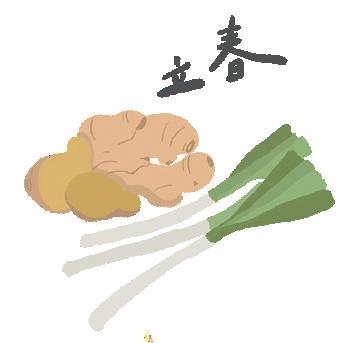

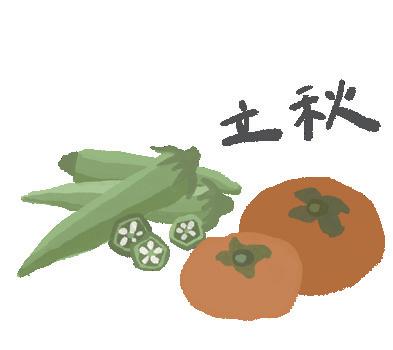
Generally falling on November 7, lidong marks the beginning of winter. Traditionally this has been a day during which people in colder regions prepare their bodies for a long and cold winter. While the winters in Taiwan are far from harsh, eating invigorating winter meals such as mutton stew and ginger duck are nevertheless popular on this date and throughout the winter.
Most people in Taiwan think of dongzhi (December 21 or 22) as a day when tangyuan are eaten. These are small balls made of glutinous rice with a sweet filling served in a hot broth. Apart from being a popular sweet treat especially beloved by children, tangyuan have also been used to predict the gender of unborn children. Expecting mothers would place a tangyuan in front of an oven and wait for it to expand. A tangyuan that cracked open would be mean a boy and, if not, a girl would be born.
Taiwan now has plenty of choices when it comes to having DIY experience fun. If you want to make your own jewelry, try one of the silversmith courses offered by Kinjo.
In 2006, Kinjo's founder – Liu Guan-ling – opened the chain’s first jewelry workshop at the base of the Yangmingshan massif on Taipei’s north side. At that time, hers was pretty much the only open studio in Taiwan, and something of a curiosity. Before Kinjo opened its doors, the only way for people to experience silversmithing was to commit to a 3-5~year apprenticeship, and Taiwan offered few DIY experiences of any kind.
These days, the lay of the land looks rather different. Kinjo, it turned out, was ahead of the game, and a cursory trawl through Google Maps and travel websites nets an impressive haul of experience-supplying workshops. In Taipei alone, you can try your hand at flower arranging, glass-blowing, tiedying, silk printing, coffee brewing, quilting, leather working, and cocktail mixing. You can make your own soap, ecosphere, lamp, chopsticks, candle, or perfume – whatever outlet your creative yen desires can be provided.
As to why such places have proliferated here, I would hazard a guess that the trend is at least partly fuelled by a global sway of interest away from having things and towards doing things . With the Taiwanese working some of the longest hours in the world, taking time out to focus on such handicrafts can also provide a good way to decompress.
For travelers, holiday crafting experiences bring all the usual benefits of such endeavors: a sense of satisfaction, relaxation, and a little self-confidence boost. But more than that, they also let you return home with a one-of-a-kind souvenir, something with your vacation memories stitched, beaten, or molded into its very fabric.
One of the limitations of the business model is that such operations tend to be run by single skilled individuals, who are only able to impart their knowledge to one group at a time. Kinjo has managed to break the mold by distilling the process down into something simple enough for trained employees to oversee, allowing the company to expand.
 TEXT AMI BARNES PHOTOS KINJO, VISION
DRAWN TO METALWORK Kinjo's founder, Liu Guan-ling, enjoys helping people channel their creativity
TEXT AMI BARNES PHOTOS KINJO, VISION
DRAWN TO METALWORK Kinjo's founder, Liu Guan-ling, enjoys helping people channel their creativity

Liu Guan-ling discovered her passion for silversmithing while studying for a fine-arts degree. As her studies progressed, she found herself increasingly drawn to metalwork. Its directness, the fact that you’re in direct contact with the material, and its tactile immediacy held greater appeal than some of the more esoteric fine-art disciplines.
Post-graduation, Liu opened a concession selling her own designs and leading DIY sessions, and returned to university to pass on her skills to the next generation. For her, it didn’t seem like much of a jump to weld these two strands of her professional life together – although she admits that teaching university students is an entirely different proposition to guiding customers through the creative process. Whatever their reason for coming to her, Liu says she enjoys helping people channel their creativity, particularly when she knows the customers’ stories. One of her favorite parts of the job has been seeing couples who originally came in to make promise rings return years later to forge their wedding bands.
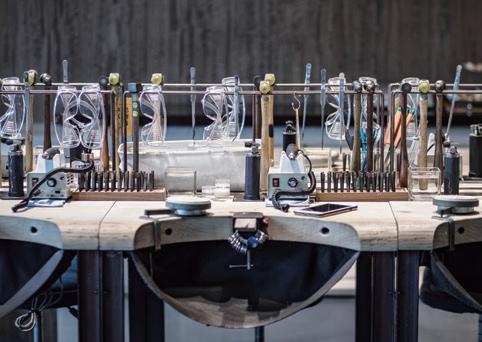
Today, despite being kept busy overseeing her muchexpanded business, Liu still finds time to design two new collections per year. Looking around at the décor of Kinjo’s flagship Shilin store, it is clear to see that she takes many of her aesthetic cues from the natural world. The color palette is an understated mix of oatmeals, slates, and warm, earthy browns, the simplicity of it allowing your eye to be drawn instead to the texture of rocks and wooden surfaces that dot the airy workshopcum-café. When asked if such forms provide inspiration, Liu agrees, pulling up an image of a ring from her current season, which looks to be modeled on the cuboid crystal clusters of pyrite. But – ever the businesswoman – she is quick to point out that personal aesthetics will only get you so far, saying she also has to pay attention to trends in the market and customer feedback.
 Work stations
Creating your own ring is fun
Flagship store in Shilin District
Work stations
Creating your own ring is fun
Flagship store in Shilin District
Liu says that the majority of DIY customers will come to an outlet having already selected their project online, but even so, it’s still advised to pick up the samples and try them on to be sure that you’re going to be satisfied with the finished product. For this reason, each location has trays beside the checkout counter displaying the various items available for aspiring silversmiths to create.
Projects start at about NT$2,800, and customers can choose from a range of silver rings, bracelets, pendants, and earrings. A more expensive Promise series uses different precious metals (gold, rose gold, and platinum), although generally these are selected by couples wanting something extra-special, and the prices can run to over NT$60,000.
Whatever you choose, there’s no need to fret about getting out of your depth. The process of forging your own piece of jewelry has been distilled down into a series of steps so smooth that anyone can be led through it. Each item can be made within three hours, and under the expert guidance of Kinjo’s staff, you are guaranteed to come away with a precious treasure. (Note: At present, Kinjo doesn’t offer classes in English, so make sure that someone in your group can understand Chinese.)
During the sessions, customers are guided through texturing, stamping, annealing (heating the metal until it’s soft), trimming, and finishing the piece. Many customers choose to fashion something unique, like the popular “coord” ring, which can be stamped with the coordinates of a meaningful location, or a simple band embellished with a laser-cut replica of a loved one’s fingerprint.
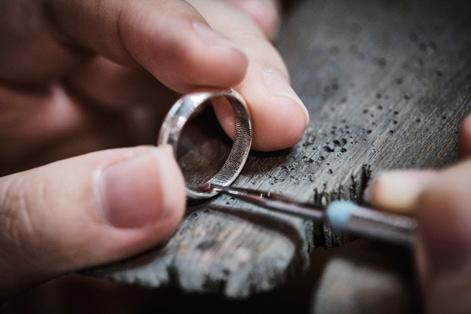
Kinjo’s workshops can be found in Taipei City’s Shilin District (close to the Chiang Kai-shek Shilin Residence) and Xinyi District (one in the Songshan Cultural and Creative Park and one in the Shin Kong Mitsukoshi Xinyi Place), New Taipei City’s Banqiao District (within the Mega City mall), and Taichung City (inside the Top City Taichung mall). Each location seats around a dozen crafters, so the staff is able to keep an eye on everyone. Those who come with a group don’t need to worry about some finishing earlier than others, as each branch has a little staging area with lights and props set up so that you can stay busy taking studioesque shots of your creation to share with friends. All that’s then left to do is to don your new treasure and wait for the compliments to roll in!
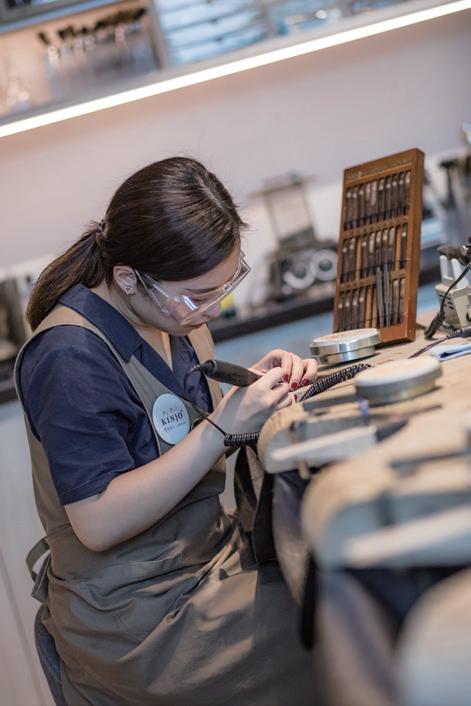
TAI Urban Resort in Kaohsiung is the eighth hotel of Chanyee Hotelday group, which is known for its cultural-creative design hotels. Located in the center of the harbor city’s Asia New Bay Area, the hotel is connected to Kaohsiung Public Library’s main building, creating what feels like a cultural living room in an urban setting. The hotel has a total of 208 guestrooms in various styles and appearances, five themed restaurants, and three outdoor bars located high up on the upper floors. Especially attractive is the cantilevered high-altitude transparent infinity swimming pool from where you can take in breathtaking views of the Asia New Bay Area. This has become one of the most beautiful places to enjoy unforgettable sunsets.

the hotel’s No. 9 Café at the Park coffee bar are hotspring pools with tiny fish. When taking a foot bath, these fish will nibble at your feet and eat dead skin, allowing the skin to better absorb the minerals in the hot-spring water. In addition to enjoying a soothing hot-spring foot bath, you can also experience shrimp fishing, taste freshly-brewed beer, and feast on stir-fried snacks. Since No. 9 Group is in charge of operating Qingshui Geothermal Park, the hotel’s Jiu-Ding Hot Pot restaurant is offering “Qingshui Flavor Dishes” giving diners a taste of local hot-spring delicacies. These dishes include mushroom and cucumber chicken soup, Japanese-style abalone, white shrimp with angelica and wolfberry, steamed Neritic squid, grilled corn shoots, sweet corn, water bamboo shoots, spring onion pancakes, unshelled peanuts, butter mushrooms, and brown rice tea.
● Founded in 1922; a well-known school for secondaryschool teachers and a comprehensive university






● Placed 61st in Asia and 334th worldwide in the QS World University Rankings 2022
● Home of the Mandarin Training Center, which is well known domestically and abroad
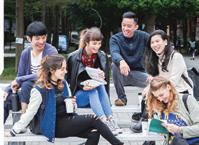
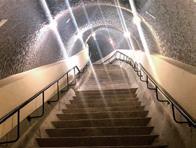
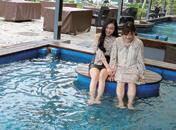 HualienHOTEL
HualienHOTEL

No. of rooms: 257


Room rates: City View Rooms from NT$7,800; Japanese/ Western Rooms from NT$16,800 (room rates are subject to 10% service charge)



Desk personnel speak: Chinese, English Restaurants: Happy Garden (Chinese, Cantonese), Arcadia Café (Western style)
The hotel is located close to Hualien Harbor, allowing you to enjoy the most beautiful sunrise over the Pacific Ocean, the water’s color ranging from deep azure to light blue, the sun’s palette ranging from pale yellow to golden. Take in the marvelous views of the sun beautifully reflected by the sparkling sea from the infinity pool or one of the sea-view guestrooms. Staying at the hotel gives you easy access to the world-class scenic wonder that is Taroko Gorge as well as the bucolic East Rift Valley. Travel with friends and family and explore the mountains and the coast. Hualien will surely give you unforgettable memories!
No. 51, Minsheng Rd., Hualien City, Hualien County (花蓮縣花蓮市民生路51號) Tel: (03) 823-9988 Fax: (03) 823-0077 www.fullon-hotels.com.tw/hl/en/
 TaipeiHOTEL
TaipeiHOTEL
Situated on Mt. Jiantan in Taipei, the Grand Hotel is a 14-story palace-style building constructed in 1970. There are two underground tunnels, under its east wing and west wing, respectively, which were designed as emergency escape routes for President Chiang Kai-shek. After opening the West Tunnel earlier, receiving enthusiastic response by visitors, now, the 50-year-old East Tunnel has been opened to the public as well. It has a length of 67 meters with a curvy design meant to prevent chasing soldiers from shooting at the fleeing parties, and walls with an uneven surface to enhance sound absorption. Since only a limited number of visitors can be accommodated, the East Tunnel is only open to guests who come on corporate trips, attend state banquets, or opt for a special East Tunnel Room Package.
1818 [guided-tour department]
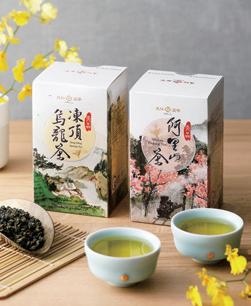
TenRen's Tea provides a friendly environment where you can enjoy delicious food, drink excellent tea, and buy special souvenirs. Taste natural and healthful tea cuisine dishes, and try and buy tea produced in Taiwan.
cha FOR TEA ToGo offers a wide variety of stunningly flavorful tea drinks.
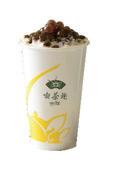
Apart from bubble tea (“pearl milk tea”), a mustdrink when visiting Taiwan, you also have to try the 913 King’s Tea, which is only available at cha FOR TEA ToGo. In addition to the pleasant flavor of high-mountain Oolong tea, you can also experience the sweet after taste of ginseng.
TenRen’s Tea Taipei – Ximen Branch ( 天仁茗茶台北-西門店 ) No. 76, Xining S. Rd., Taipei City (台北市西寧南路76號) Tel: +886-2-2361-1986 Hours: 09:00~21:30 mytenren.com
No.


Sec. 1, Yongfu Rd.,
West District, Tainan
Lakeshore Hotel Yilan 宜蘭館
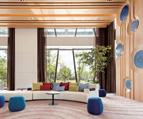
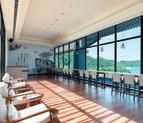
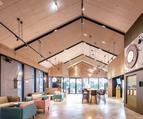

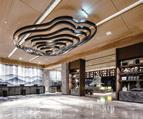


No. 135, Kaixuan Rd., Yilan City
No. 201, Sec. 2, Wubin Rd.,
Township, Yilan County
No. 38, Zhongzheng Rd.,

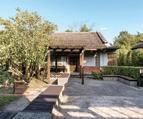

Township, Yilan County
Shun’an Village, Xincheng Township, Hualien County